

Wilderness Adventuring
- 1 Sequence of Play Per Day
- 2 Distance and Measurement
- 3.1 Flying Mounts
- 6 Losing Direction
- 7.1 Terrain Modifiers
- 7.2 Forced March
- 10 Visibility
- 11.1 Chance by Terrain
Sequence of Play Per Day
- Decide course: The players decide on their course of travel for the day.
- Losing direction: The referee determines whether the party gets lost.
- Wandering monsters: The referee makes checks as applicable.
- Description: The referee describes the terrain passed through and any sites of interest that the party comes across, asking players for their actions, as required. If monsters are encountered, follow the procedure described in Encounters .
- End of day: The referee updates time records, with special attention to rations, spell durations, and the party’s need to rest.
Distance and Measurement
The open spaces of the wilderness mean that characters and monsters can move more freely than in a dungeon.
Ranges and movement rates: Are measured in yards, instead of feet. This means that ranges and movement rates are tripled.
Areas: Of spell effects, breath weapons, etc. are still measured in feet.
Miles per day: The distance a creature can fly in a day is double the distance it can travel overland (see #Overland Travel ). For example, a creature with a movement rate of 120’ could travel 24 miles in a day overland, but could fly 48 miles in a day.
Terrain: Does not affect air travel.
Flying Mounts
In general, a winged beast may carry riders or other burdens based on its HD:
- 3 HD creatures: May carry a being about half the size of an adult human.
- 6 HD creatures: May carry an adult human.
- 12 HD creatures: May carry a large animal like a horse.
- 24 HD creatures: May carry a very large animal like an elephant.
Foraging for herbs, fruits, nuts, etc. can be performed alongside normal movement (see #Overland Travel ). The party has a 1-in-6 chance per day of finding enough food for 1d6 human-sized beings.
Hunting animals takes up a complete day, with no travelling or resting possible. When hunting, there is a 1-in-6 chance of encountering animals which may be suitable for eating (if they can be caught!). This is in addition to the normal chance of random encounters (see #Wandering Monsters ).
Losing Direction
At the start of each day of travel, the referee should roll to determine if the group loses direction. The probability depends on the terrain being traversed:
- Clear, grasslands: 1-in-6.
- Barren lands, hills, mountains, woods: 2-in-6.
- Desert, jungle, swamp: 3-in-6.
Effects: See Losing Direction .
Overland Travel
Miles per day: The number of miles a character can travel in a day is determined by dividing their base movement rate by five . For example, a character whose base movement rate is 120’ could travel up to 24 miles in a day.
Terrain Modifiers
Some types of terrain modify the speed at which characters can travel:
- Broken lands, desert, forest, hills: 33% slower.
- Jungle, mountains, swamp: 50% slower.
- Maintained roads: 50% faster.
Forced March
If characters need to travel further in a day, they may engage in a forced march.
Speed increase: The distance travelled is increased by 50%. For example, a character that can normally travel 24 miles in a day could travel 36 miles.
Rest: After a forced march, characters must rest for a full day.
Frequency of rest: Characters must rest for one day per six days of travel.
Penalty for not resting: If characters press on without resting, they suffer a penalty of -1 to hit and damage rolls until they have rested for one full day.
Surrounded: If a party is surprised by three or more monsters, the monsters may have moved to encircle the party.
Characters can usually see for three miles around them, in open terrain. This range may sometimes be reduced (e.g. in overgrown terrain such as a forest) or increased (e.g. looking out from the top of a mountain).
Wandering Monsters
Frequency: A check is typically rolled once per day, but the referee may choose to make more checks: up to three or four per day.
Chance: The chance of encountering a wandering monster depends on the terrain being explored (see below).
Distance: Wandering monsters are encountered 4d6 × 10 yards away. If either side is surprised (see Encounters ), this is reduced to 1d4 × 10 yards.
Chance by Terrain
- City, clear, grasslands, settled lands: 1-in-6.
- Aerial, barren, desert, forest, hills: 2-in-6.
- Jungle, mountains, swamp: 3-in-6.
- Adventuring

7 Dice Sets
- 6 Sided Dice
- 10 Sided Dice
- Glow in the Dark Dice
- Metallic Dice
- Orange Dice
- Purple Dice
- Yellow Dice
- Artificer Dice
- Barbarian Dice
- Cleric Dice
- Fighter Dice
- Paladin Dice
- Ranger Dice
- Sorcerer Dice
- Wizard Dice
Liquid Core Dice
- Gemstone Dice
- Specialty Dice
- Mystery Dice
- Single Dice
- 20 Sided Dice
- Everything Dice
- One Shot Questers
- Campaign Journals
- Call of Cthulhu
- Sharp Edge Dice
- ★ New Releases ★
- Resources and Collaborations
- Subscription Box
- Awesome 5e Blog

Search our store
Dnd 5e overland travel: 7 proven methods.

All the Best Methods for Role-Playing DnD 5e Long Distance Travel
By Riley Rath
Table of Contents
- we need several methods for our dnd 5e campaigns , - summary if dnd 5e long distance travel rules as written , - 7 different methods for running travel in dnd 5e, - dnd 5e overland travel dm tips , - conclusion: put it all together.
(This post is part of a series on "travel DnD 5e." Read the first post here . For more on exploration, start here ).
Awesome Dice Has 7-Dice Sets for TTRPG Players
Explore new dnd dice, we need several methods for dnd 5e overland travel.
In a previous post , I talked about how travel is usually necessary for a Dungeons and Dragons (or similar TTRPG) adventure, but the rules-as-written make it confusing and boring, so most tables skip it... so we skip it.
But that doesn't solve the problem... we need better Dnd 5e overland travel.
Cuz while the original 1974 version may not have had expansive homebrew and overland travel modules (like Storm King's Thunder ) — you had to get a 3rd party supplement — worlds demand it... today's DnD is about so much more than getting from point A to point B.
Like, you know how there is "no WRONG way to eat a Reese's"? Well... in a similar way... there is no RIGHT way to travel in DnD 5e .
Fun 5e travel is situational... it depends on your players, where you are in the story, and the destination up ahead... if you try to shoe-horn in a single method for every situation, you only continue the stereotype that DnD travel sucks.
How you get there often (though not always) matters.
There are a lot of different ways to run travel in DnD 5e, and this post goes through them all and helps you choose which one is best for you. This post is part 2 of our travel series, the goal being:
- To make travel a REAL option in your campaigns.
- Add a different, fun flavor of adventure into your DnD campaign.
- Add something you and your players will look forward to.
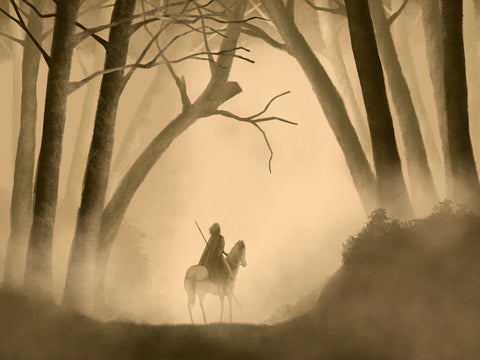
Summary of 5th Edition Overland Travel Rules as Written
So in our other post, we covered the DnD 5e overland travel rules and why they suck. Not pulling punches here: WOTC rules and nonexistent guidelines are hot garbage and the reason no one enjoys traveling during adventures or runs it in their campaigns.
Here is a summary of the rules:
- When traveling, the players choose a travel pace. This dictates their movement speed.
- Different travel speeds mean players cover a certain number of miles/hexes in a day, and each have different consequences.
- If the travel pace of the creatures in your party are different, then you will move at the rate of the slowest creature (so be aware of the races of your party composition).
- If you travel at a fast pace, you take levels of exhaustion that require you to take a long rest in order to return to normal.
- Traveling at a normal pace results in no penalties or benefits.
- But if you move at a slow pace, you can move stealthily by moving at half speed.
- Rangers can travel easier through difficult terrain.
- Pages 111 of the DMG detail how players need to keep track of rations and foraging.
- Travel often includes wilderness survival encounters, such as sinking swaps, rushing rivers, and avalanches.
7 Different Methods for Running DnD 5e Long Distance Travel
(Note: While many different DnD content creators offer multiple travel methods, the Dungeon Dude was, imo, the most comprehensive. Watch it here ).
Solution 1: Narrate and "Hand Wave" Travel
I know... this post is about making dnd 5e overland travel fun... but a sure-fire way to make it NOT fun is to ALWAYS role-play travel every time the players go anywhere! I insist... DO NOT RUN TRAVEL JUST FOR THE SAKE OF TRAVELING!
Ginny D comically elaborates on this. Watch the whole thing here , but here's a summary: most of our attempts to spice up travel just ends up as filler. Which is a boring waste of time for you and everyone at the table.
Sometimes the distance is too short... or too safe... or too boring to justify spending the time. Sometimes the narrative will suffer too much if you take all the time to travel somewhere. And sometimes the mood of the players or tone at the table demands you get to the point. Regardless, at some point in your adventure, you will discover that narrating the journey is the best choice in that particular moment.
For example, unless there is bad weather or a threat waiting for them (due to their decisions, of course) , I usually skip travel if my party is backtracking the same route. There is an argument to be made that the party's familiarity with the route would make it much harder for them to run into dangerous encounters.
This is the "Dnd Fast Travel" method... plot armor for player characters.
Another reason to skip traveling is if the destination is guaranteed to be 1,000% more interesting than the journey... you don't want travel to distract a highly-immersed and engaged table. Maybe after many sessions of investigating, they JUST discovered the location of an ancient dwarven stronghold... you are probably going to want to carry their excitement straight to the entrance to the cave network rather than waste it on a slog of goblin ambushes on the road.
When skipping dnd 5e overland travel, just have three or four sentences describing what the characters see, how fast they travel , etc. and then have them arrive at the destination. No dice rolls... no random encounters... no supplies... no nothing. Just get there!
Solution 2: Roll Every Hour
This is straight from page 106 of the DMG. Have players roll survival and perception checks every hour and roll some sort of random encounter every hour. The "random encounter" does NOT equal combat... it can be an NPC, a pretty view, a discovery... etc.
This is surely going to result in the 6 encounters for which the DnD 5e rest system was designed . It will certainly drain the PCs hit points, spell slots, and other resources. Which is great... and very much like video game RPGs. However, it will also make dnd 5e long distance travel take FOREVER!!!!!
Don't do this unless you are hella hardcore and want to have your adventure be as realistic as possible, measuring exact distances. It is maaaaaybe an option if your entire adventure is just one long travel session (like in Lord of the Rings )... but even that has plenty of narration.
I believe this isn't travel at all... it's a mock Final Fantasy RPG mechanic!
It's just standard DnD! It, like solution 1, gets rid of long distance dnd travel, but does so by stretching it out so much that it becomes the game itself.
In my opinion, the fact that the Dungeon Master's Guide only offers these two solutions shows how much WOTC dropped the ball. It's been 9 years, everyone... you are professionals... come on.

Solution 3: DnD 5e Overland Travel Takes One Hour of Playtime
This is the most popular suggestion for fixing dnd 5e overland travel. Luke at the DM Lair makes the case that DMs should set aside 1 hour for travel. This is an hour of real-world activity. This hour would be enough for a short, 30-minute combat encounter, maybe a 10-minute discovery, some role-playing, and narration. He also points out that random encounters like these provide an opportunity to use fun monsters and creatures that won't otherwise come up in your game/plot.
And while I love the DM Lair... what he does... and understand where he is coming from... and agree that this is sometimes great... I respectfully disagree with this method. I think that any of the other methods would result in both a better game experience and better story.
Admittedly, if the party is traveling through a mountain pass or a single forest, then it works fine. But if they are traveling across continents or oceans? Or across wildly different climates? Or for so long that the seasons change? The "one single encounter" method is rarely the right way to run dnd 5e overland travel. As stated previously , the "random encounter" just makes traveling take much longer than it needs to.
Order of the Stick has a great comic that makes fun of this... and points out how weird it is. It is one of the only times players KNOW they will get a long rest as soon as the battle ends. Which means... they will throw everything they got. Hold nothing back. After all, why not? They will just long rest and get it all back just before they reach the dungeon entrance. No stakes... no consequences... no choice... no fun... because it is a meaningless encounter that does not impact the players, the story, or their state as they arrive.
However, if you insist on sticking to this method, the Dungeon Dudes make an amazing point that you must heed. They suggest you treat the single travel encounter as a "dungeon room 0" that foreshadows what lies in wait at the destination. This method builds anticipation, creates a sense of the passage of time, while also getting the party quickly to the action.
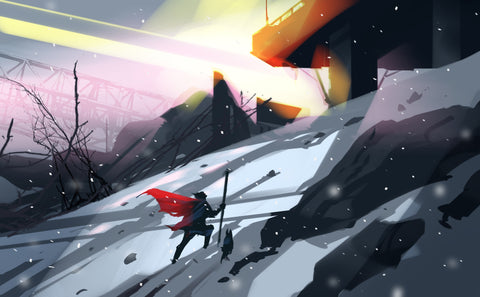
Solution 4: When All Else Fails... Run a Skill Challenge!
A skill challenge is widely considered the best thing 4e gave to us. Here is how it basically works:
- DM says the players will resolve an encounter more cinematically rather than with a social or combat encounter.
- The DM sets an appropriate DC (difficulty class).
- The DM sets the scene, describing the threats and obstacles the player characters have to overcome.
- Each "round," players select a skill check (or saving throw) to make.
- If the player succeed a certain number of times, they win the skill challenge and continue their journey.
- If the players fail a certain number of times, then they fail the skill challenge and a new scene begins.
This is the method Matt Coleville uses ( check out Matt Coleville's video here ) . A skill challenge can bring some tension and reduce an otherwise complicated and lengthy encounter into something that is quick, cinematically exciting, and allows players to shine in different ways. They can be used in DnD 5e overland travel for anything from navigating the wilderness, surviving a flood, or socializing with random passersby on the road. Like a montage in a movie, it is a great way to accomplish A LOT in a short amount of time.
Now, personally, I believe too many people rely on skill challenges to accomplish too much in their campaigns . That said, they firmly belong in the exploration pillar , and therefore also have their place in dnd 5e travel mechanics. In my games, they are particularly helpful to quickly backtrack across terrain the party is already familiar with. Long story short: a skill challenge can be a useful travel tool and, when done well, very fun... especially when combined with travel roles (see the next travel post... HERE ).
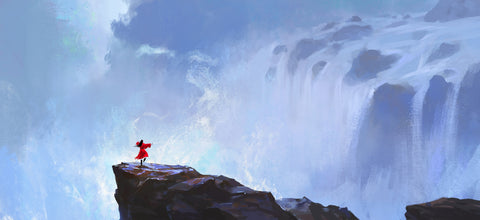
Solution 5: Let Dnd 5e Overland Travel Take a Single Game Session (or Two)
**If the first few solutions are about minimizing the journey time as much as possible, then the final few are about getting the MOST out of it**
If you want to be intentional about weaving travel into your DnD campaign and table culture, then I definitely advocate setting aside at least a session to make it fun. But how do you design a whole session around getting somewhere?
The Dungeon Dudes offer a helpful image you are probably familiar with: Design the route(s) like you would desgin a large dungeon . Give their journey a clear structure with multiple ways to go. But instead of "rooms," you have encounters and alternation between social, combat, and exploration encounters. And don't forget to narrate the areas as they travel through and in between each encounter!
This method creates 5e travel encounters, which solves the principle problem facing everything that belongs to the exploration pillar... the lack of scenes .
Oh, what was that? Worried your adventurers will have the benefits of a long rest for each encounter? BOOM... use a rest mechanic I first heard about on We Speak Common : "It takes 24 hours to gain the benefits of a long rest an 8 hours for a short rest."
Why apply this to dnd 5e overland travel? Because when you are on a journey... whether it be by plane, sea, car, horseback, or on foot... it is TIRING. It takes it out of you!
**I expand on this in the third travel post, which contains — in my not-so-humble opinion — the best way to play travel in most dnd campaigns.**
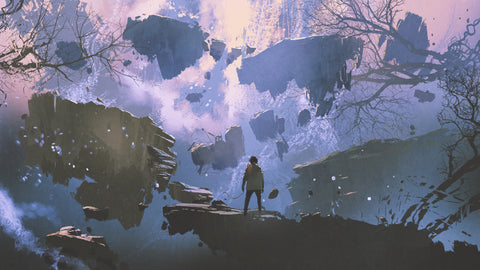
Solution 6: 5e Travel as an Entire Adventure Arc
This solution is similar to solutions 2 and 4. You don't roll every hour like in solution 2, but you also don't design the route like a dungeon in solution 4. It is getting every ounce of fun out of 5e travel... but it is also the most time consuming. With this method, the journey IS the destination; you'll spend anything from a handful of sessions to months or even years on the journey. Here are some situations for which this bold strategy works best:
- If the setting/environment the players are moving through is particularly dangerous (ex: Chult in Tomb of Annihilation ).
- If the party begins due to some common, basic reason and you want to reveal the plot through what they encounter along the road.
- If the party joins a caravan, or the crew aboard a boat, and you want to give them ample time to get to know the NPCs.
- If the party is fleeing and needs to rebrand, redefine, or rediscover who they are before they dive back into the main plot again.
- If you want your campaign to have a more episodic or anthology format (like Avatar: The Last Airbender ). You slowly build the overarching plot, but have separate mini-adventures that add variety to your campaign .
One thing I love about this method is how much downtime there is. Players will have plenty of opportunities to track rations, forage in the forests, and interact with villagers along the road.
And though the road may be lonely, the party can keep each other company! Periodically roll which player characters make small talk. It's a great opportunity to discuss things outside of the adventure, open up, and create more complex characters.
Solution 7: Do a Hex Crawl!
Hex crawls are a specific mechanic invented to marry exploration and travel together. Typically, they are best when parties are searching the wilderness, rather than traveling across roads and communities. For these reasons, it will be receiving special attention in an upcoming blog post!
"What About Planar or Sea Travel?"
Dungeons and Dragons is a fantasy game that takes players on epic adventures across the outer and inner planes. However, planar travel in dnd 5e is all about magical settings that are different from standard Dnd 5e overland travel. They are covered in our Travel DnD 5e Guide .

DnD 5e Overland Travel DM Tips
**There may be no "one size fits all" method... but here are some tips that always work no matter which way you choose to run it: sure-fire tips and tricks, starting with the most important...**
A) Narrate the Surroundings Well and Often
When you travel in real life, you get out of your familiar surroundings and are thrust into the big, wide world. New settings, new cities, new peoples. And all of these different settings come with unique sights, sounds, tastes, smells, and sensations... and they are MEMORABLE.
Guy from How to Be a Great GM points this out. He looked back on his backpacking trips and realized that what he remembers are the VIEWS from the mountain top. You know what he DOESN'T remember? Packing his food for the trip, driving to the trail, or setting up a tent.
So DMs... you gatta regularly narrate what the characters are traveling through... like, A LOT.
- When they enter a new area...
- When they come across something that you need to draw their attention to...
- And/or if 10 minutes have passed and the image in the mind's eye is fading...
Dnd 5e Overland Travel is part of the exploration pillar ; for players to explore, they need to visualize the environment their characters are in. So always lean on over-narrating.
And players... as the DM actively narrates, you must actively visualize . It doesn't happen passively and requires intentional effort. But trust me, it will be worth it! The adventure will feel so much more fantastic and cinematic.
B) Travel When the Player Characters Are at Lower Levels
In the previous post, I said travel can help the world feel dangerous and give it a sense a scale. That is particularly true when your players are level 1 pip-squeaks. I mean, if a Giant Rat can kill them... how are they going to fare against something as common as an Owlbear?
On the flip side, this is particularly NOT true when they are bigger and stronger... starting around level 9. At that point, they will have access to spells like Magnificent Mansion and Teleport, which will turn arduous trekking into a walk in the park. Simply put: the tension, wonder, and experience of travel matters at lower levels.
As your players level up and get stronger and stronger, they will find the bloodthirsty bandits that gave them such trouble are now barely an inconvenience. So much so that you can role-play a bandit encounter rather than roll it! But if you traveled at lower levels, narrating an easy battle at higher levels will reinforce just how much stronger the players have gotten! They will think "wow... what used to take us several sessions now takes just 5 minutes!"
So if your players want to enjoy traveling in your adventure, YOU HAVE TO START EARLY. Because by level 15, players will be throwing their heads back in laughter when warned of the trek to the mountains... cuz last session they used "Gate" to magically traverse the outer planes of the cosmos...
C) Maintain 3 Traveling Basics
The "basics" include three things:
- Financial/material cost
- Marching order
- Conversation
DnD parties often adventure for potential riches... but getting there also costs them riches. Even in the real world, long distance travel is a dangerous and expensive adventure. Ask how many taverns they stay in, what kind of food they plan on eating, what supplies they need, etc. They gold you give them is for so much more than fancy armor and magic items!
Does this mean you have to track every little thing? Heavens, no.
- If they fall into some rapids and crash against rocks... yeah, maybe their equipment should be damaged.
- And if they choose to stay at taverns... yeah, refer to the lifestyle expenses on page 157 – 158 of the PHB .
- And if they choose to camp in bad weather for a week... yeah, give them a level of exhaustion until they get good sleep in a warm bed .
The Dungeon Coach also pointed out how helpful it is to have the players decide on a "standard" marching order. Knowing who is where will come in handy when there is some sort of encounter. The DM can seamlessly transition from narration to encounter, keeping the pace of the game exciting.
And if I may add to this point, a lot of stuff happens when the players are NOT on the road. Knowing what the characters are generally up to is better than asking them every time they break camp. So have several other "marching orders:"
- Who keeps watch when...
- What characters do at a tavern...
- What they look for when they enter a town...
Finally, just like in the real world, dnd 5e overland travel can be peaceful and uneventful. And so what do people do in those situations? They talk to one another! They catch up, ask random questions, play "I spy with my little eye," in the back of the station wagon/horse wagon!
If your table hates role-playing, then maybe this isn't for them. But my table loves it, so what I do is set up two random tables: A) characters and B) topics. If my players have nothing particularly exciting to talk about, I roll rive for characters and once for topics. And boom... in between dnd 5e overland travel encounters, those two characters have to have a conversation about that topic!
Sometimes it is just silly and fun, and other times characters learn how to fight better in combat encounters, and other times there are HUGE reveals that never would have happened!
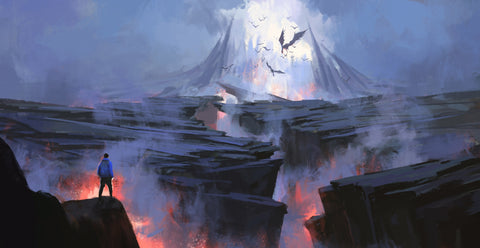
Conclusion: Put It All Together
There you have it... seven suggestions for better dnd 5e overland travel... each of which works great with five additional tips on how to make it more fun and interesting for everyone at the table.
In the hands of a skilled DM, each of these will work pretty well. However, each are forgetting one, crucial element... a missing piece that, until added, will leave the "travel dnd 5e puzzle" incomplete. The next post ( read it here now ) discusses that missing piece, as well as 3 super-simple mechanics you can use to make journeying across long distances truly special.
But to wrap this up, here is a summary:
The 7 Methods of DnD 5e Overland Travel:
- Hand wave it away... skip to the "good part"
- Roll every hour
- One encounter/hour of play time
- Take a single game session (or two)
- Do a skill challenge
- Spend the entire adventure arc traveling
- Run a hex crawl
3 Suggestions for Better Travel Gameplay:
- Narrate your surroundings well and often
- Explore when player characters are at lower levels
- Maintain the 3 basics
Click Here to Explore Our New
Dnd dice sets.
By Riley Rath - Freelance DnD Copywriter
⚄ Check Out 2024 Best Sellers! ⚄

Metal Dice Sets

Subscribe to our Awesome Newsletter!
You'll get access to exclusive promotions, news about new and upcoming releases, as well as interesting dice and TTRPG content.
Quick Links
- Dice By Color
- Shipping Information
- Privacy Policy
- Terms of Service
- Dice Recycling Program
- Returns & Refunds
Social Media
- American Express
- Diners Club
Confirm your age
Are you 18 years old or older?
Come back when you're older
Sorry, the content of this store can't be seen by a younger audience. Come back when you're older.
Shopping Cart
- Research Fields
- Druidic Orders
- Methodologies
Investigator
- Hybrid Studies
- Conscious Minds
- Subconscious Minds
- Hunter's Edge
Swashbuckler
Thaumaturge
- Patron Themes
- Arcane Schools
- Arcane Thesis
- Innovations
- Animal Companions
- Construct Companions
- Familiar Abilities
- Specific Familiars
- Undead Companions
Awakened Animal
Adjustments
Adventuring gear.
- Alchemical Items
- Alchemical Bombs
- Alchemical Elixirs
- Alchemical Poisons
- Alchemical Tools
- Alchemical Other
- Alchemical Ammunition
- Alchemical Plants
- Alchemical Food
- Bottled Monstrosities
Alchemical Items (11)
- Animals and Gear
- Animal Caretaking Gear
Animals and Gear (3)
- Precious Material Armor
- Basic Magic Armor
- Specific Magic Armor
- Consumables
- The Deck of Destiny
- Assistive Items
- Mobility Devices
- Canes & Crutches
- Hearing Aids
- Joint Supports and Splints
- Vision Assistance
- Animal Companion Mobility Aids
Assistive Items (9)
Blighted boons.
- Magical Ammunition
- Other Consumables
- Spell Catalysts
- Bottled Breath
Consumables (13)
- Thrune Contracts
- Infernal Contracts
- Other Contracts
- Bargained Contracts
Contracts (5)
Cursed items.
- Customizations
- Firing Mechanisms
- Stabilizers
Customizations (5)
Intelligent items.
- Relic Seeds
- Fundamental Armor Runes
- Fundamental Weapon Runes
- Armor Property Runes
- Weapon Property Runes
- Accessory Runes
- Shield Rune
- Transportation
- Spellcasting
- Secret Society Membership Services
Services (7)
- Precious Material Shields
- Specific Shields
Shields (3)
Siege weapons, spellhearts, trade goods.
- Magic Wands
- Specialty Wands
- Precious Material Weapons
- Basic Magic Weapons
- Specific Magic Weapons
Weapons (5)
- Companion Items
- Other Worn Items
- Eidolon Items
Worn Items (4)
Classic feel.
The classic look for the Archives of Nethys.
An alternative feel, based on the Rulebooks.
A rounded, modern look for the archives.
A variant of the Round feel, more compact.
The Blackbird, also called the Black Stone Violin, is a full-size playable violin made of black diabase after drawings by Antonio Stradivari (Stradivarius), but with technical modifications to allow it to be played.
Book of the Dead
Light theme from beyond the crypt.
The default theme for the Archives of Nethys, forged on the fires of CSS3.
Extra Contrast
A variant of the Dark theme, with stronger color contrast.
Light theme with purplish hues and a simpler font.
The original alternate theme for the Archives of Nethys.
ORC ORC ORC
Paper Standard
A variant of the Light theme, based on the Rulebooks.
Treasure Vault
The glittering hoard of a terrifying dragon!

Archives of Nethys
Rules index | gm screen | player's guide, travel speed, table 9-2: travel speed.
- Meet the Team
- Our Manifesto
- Work with Us
- Budget Travel
- Personal Development
- Work & Travel
- United Kingdom
- More of Europe
- Philippines
- More of Southeast Asia
- More of South America
- More of Central America
- South Korea
- More of Asia
- More of North America
- New Zealand
- Pacific Islands
- More of Oceania
- South Africa
- More of Africa
- More of the Middle East
- Travel Essentials
- Travel Gear
Home » Budget Travel » The ULTIMATE Guide to Overland Travel (2024)
The ULTIMATE Guide to Overland Travel (2024)
It is absolutely without question that my best travel journeys to date have been overland.
Some were on motorbike, others were by way of a cardboard sign on the side of the road, and I have visions of future journeys that involve a big old school bus traversing the lands between Europe and Asia.
Overland travel is inspiring, and it is undoubtedly the best way to hit the road, especially as a backpacker looking to save money and dig deep into countries and cultures. While social media may have you thinking that you need to spend tens of thousands of dollars on a tricked out 4×4 to become an overlander, I’m here to completely dispel that myth.
Sure, van life and Land Rover Defenders are certainly a type of overlanding, but they’re not the end all be all.
Overland travel can be as simple as sticking out your thumb and hitchhiking, or using trains and shared taxis to get from one place to another. But regardless of the rig you choose, I guarantee you the experience of coasting along wide open plains at your own pace, sharing meals of yak yogurt with nomads, and getting to pitch your tent (or park your ride) just about anywhere will be absolutely worth it.
But still, I totally understand that it can all be intimidating. So let’s set the record straight with this ultimate guide to overland travel – where you’ll see that this is very much a “do as you like” adventure.
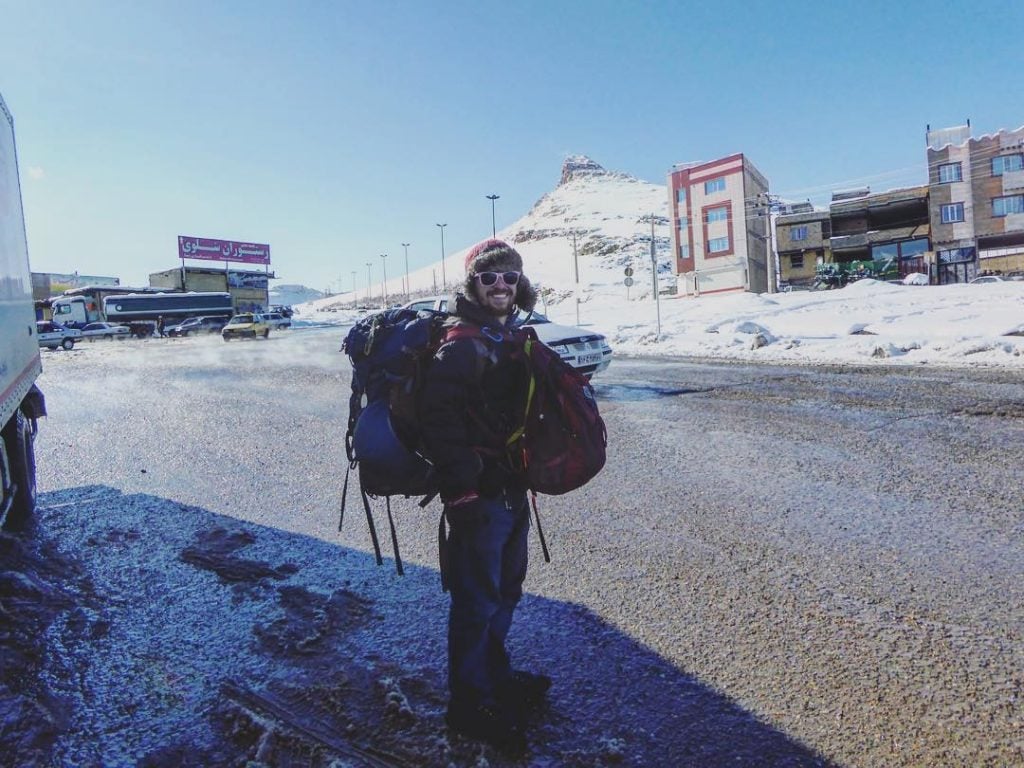
The Broke Backpacker is supported by you . Clicking through our links may earn us a small affiliate commission, and that's what allows us to keep producing free content 🙂 Learn more .

Do You Want to Travel FOREVER??
Pop your email in below to get a FREE copy of ‘How to Travel the World on $10 a Day!’.
What is Overland Travel?
While you most likely already know the literal definition – traveling by land AKA avoiding flights – there’s a lot more to overland travel than just what’s in the name.
Overland travel – whether it be by foot, by bicycle, by rail, by van or whatever method you choose – is an art in and of itself. Closely intertwined with my other favorite form of budget backpacking – slow travel – overlanding allows you to get to know the places you visit far more deeply than a bunch of flights ever could.
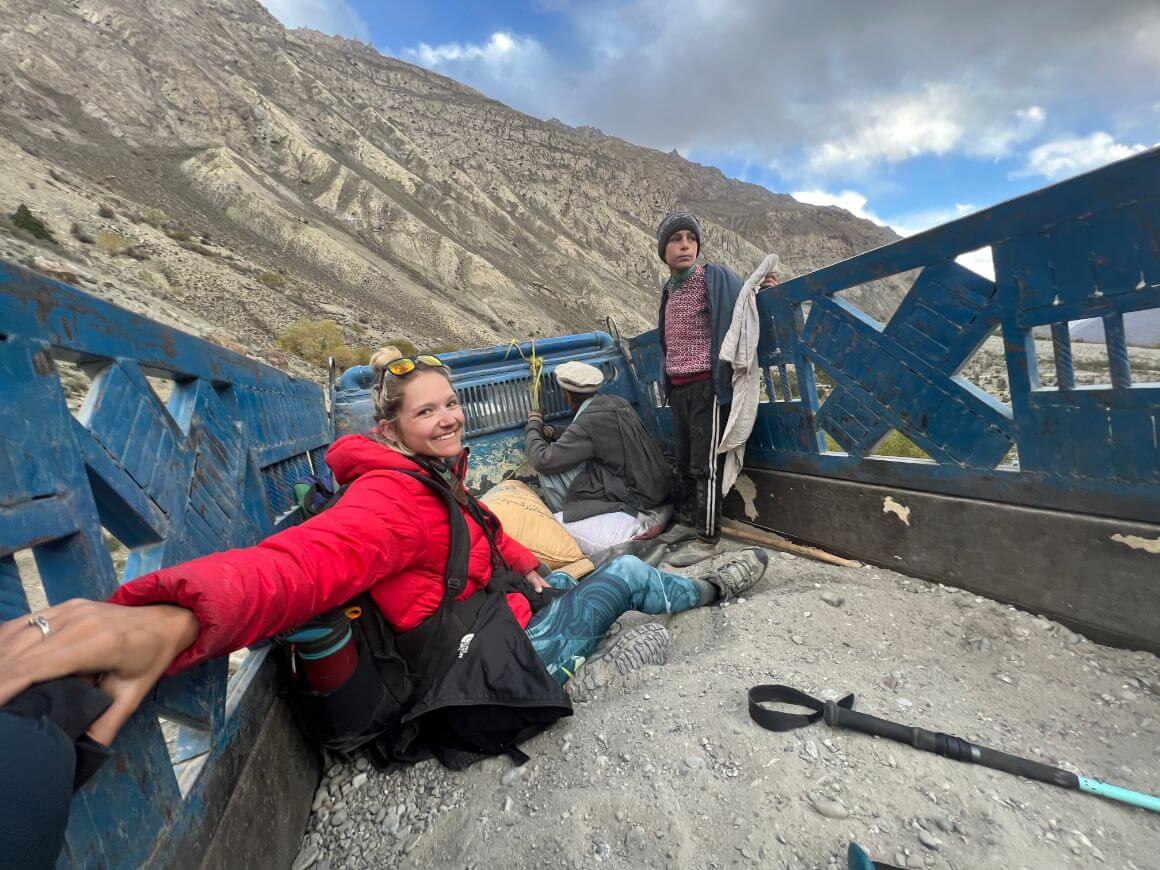
Overlanding is TRULY where the journey matters even more than even the destinations themselves. It’s what gave me some of the best moments of my life, something I know virtually all of my favorite adventurers would agree on when reflecting upon their own journeys.
And once you get started, I promise you you’ll only want to dig deeper and deeper into what it means to become an overlander…
Why YOU Should Overland
Before we REALLY get into this, I want to make something clear.
Overland travel doesn’t HAVE to be an odyssey. While it is for many travellers – like my journey from the UK to Papua New Guinea – you can travel overland without crossing a single international border.
The thing is, there are no rules to this type of travel. There’s no right or wrong way to become an overlander. You don’t need a tricked-out Land Rover Defender, you don’t need a van, you don’t need a bicycle. Hell, plenty of inspiring adventurers have embarked on incredible journeys with nothing but their backpack, a sign, and a stuck-up thumb.
So that, my friends, is one of the reasons WHY you should try overland travel: it’s truly for everyone and anyone.
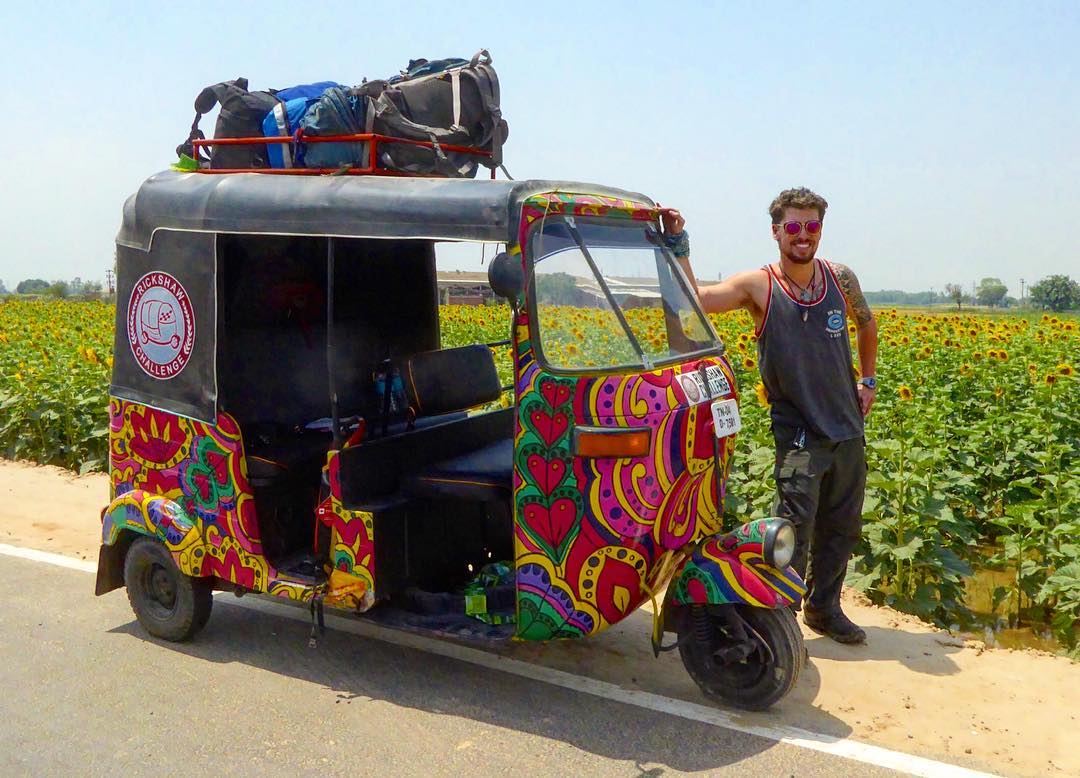
But beyond that, in all my years on the road, it’s this type of travel that’s kept me addicted to life on the road. It’s absolutely not the most comfortable, but it will teach you the most about the world, and about yourself too.
Overland travel will push you to your limits, and really make you work for each and every view and experience you attain.
For some – like cyclists – that work may be physical. For others, it may be mental: such as moving past introverted tendencies to travel by hitchhiking or dealing with driving in brand-new countries with insane motorists.
It allows you to experience life on the ground to the fullest: minute by minute, mile by mile.
Ways to Travel Overland
This is no one-size-fits-all all method of travel, as there are so many ways to overland. I’ve even seen people do it completely by foot or on something as crazy as a unicycle.
But the following are the most common, and popular, ways to get around on the ground:
While I am not a cycling fan myself, those who have done it have nothing but incredible things to say about bikepacking – which is essentially overlanding with a bicycle strapped with a whole lot of stuff. Travelling by bicycle gives you the chance to slow down and see more than virtually any other way of overlanding.
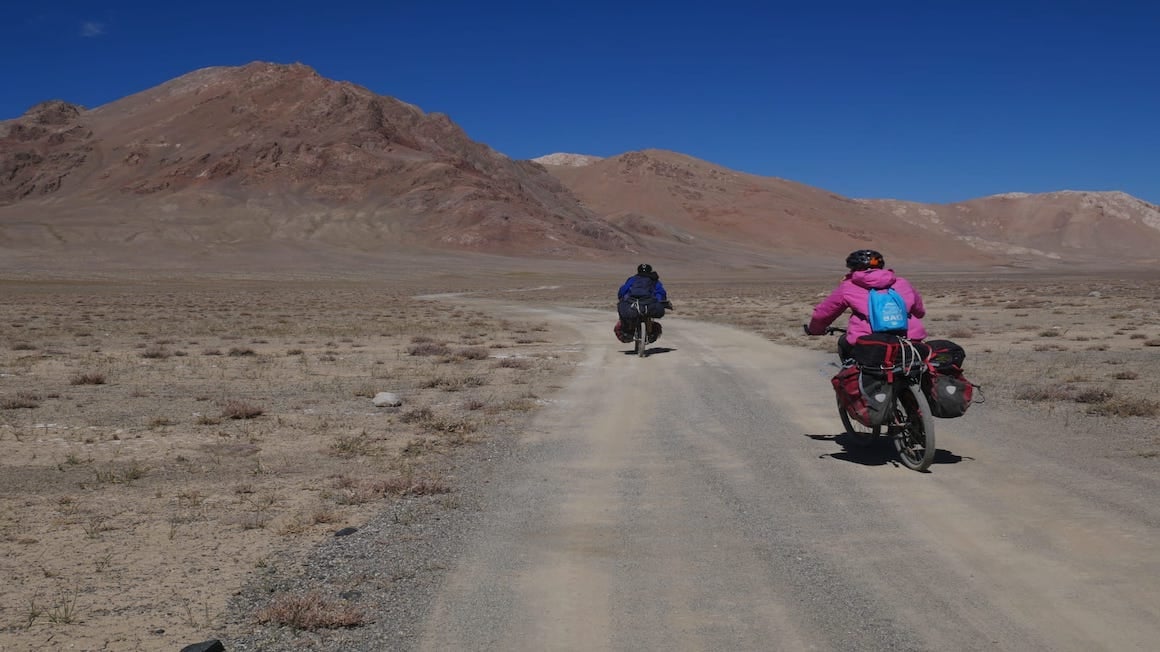
For one your speed (most cyclists don’t do more than 70km per day, depending on the terrain) will allow you to take in just about every village and turn – you’ll get to camp in places far off the tourist trail and meet an incredible lot of locals.
But moreover, cycling is as simple as it is cheap: you don’t need to worry about fuel or engine oil, it’s significantly easier to repair issues, and spare parts don’t tend to weigh that much. It’s also a hell of an accomplishment: unlike all the other forms of overland travel aside from walking, you’ll be physically putting in work every single day.
By Motorbike
As much as I love hitchhiking, traveling by motorbike truly ignites a passion that I have rarely found in other methods of exploring. The feeling of crisp mountain wind on my face as I coast through surreal scenery is one that just doesn’t get old, and it’s certainly something I’d like to try out for longer periods.
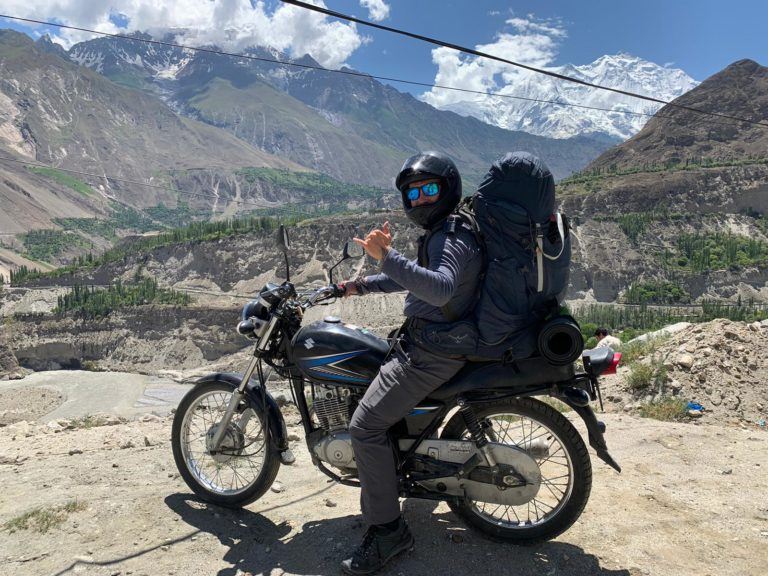
The one thing to keep in mind though is that start-up costs will not be cheap. Good bikes that can actually make it across continents are not cheap, and you’ll also need to buy extra tires, tons of fluids, and other parts that likely will not be available in the places you intend to ride.
But still: it’s worth it. You get the benefits of cycling without the intense struggle, and you’ll be able to maneuver in places where cars cannot. You’ll be able to carry a lot more than a bicycle could, and it will still be cheaper than any van or 4×4.
By Van/Your Own Vehicle
Perhaps the most OG form of overland travel is with your own car: whether it be a van, a 4×4 or an old ambulance, I’ve seen adventurous souls carving their own paths in virtually every type of rig you could imagine.
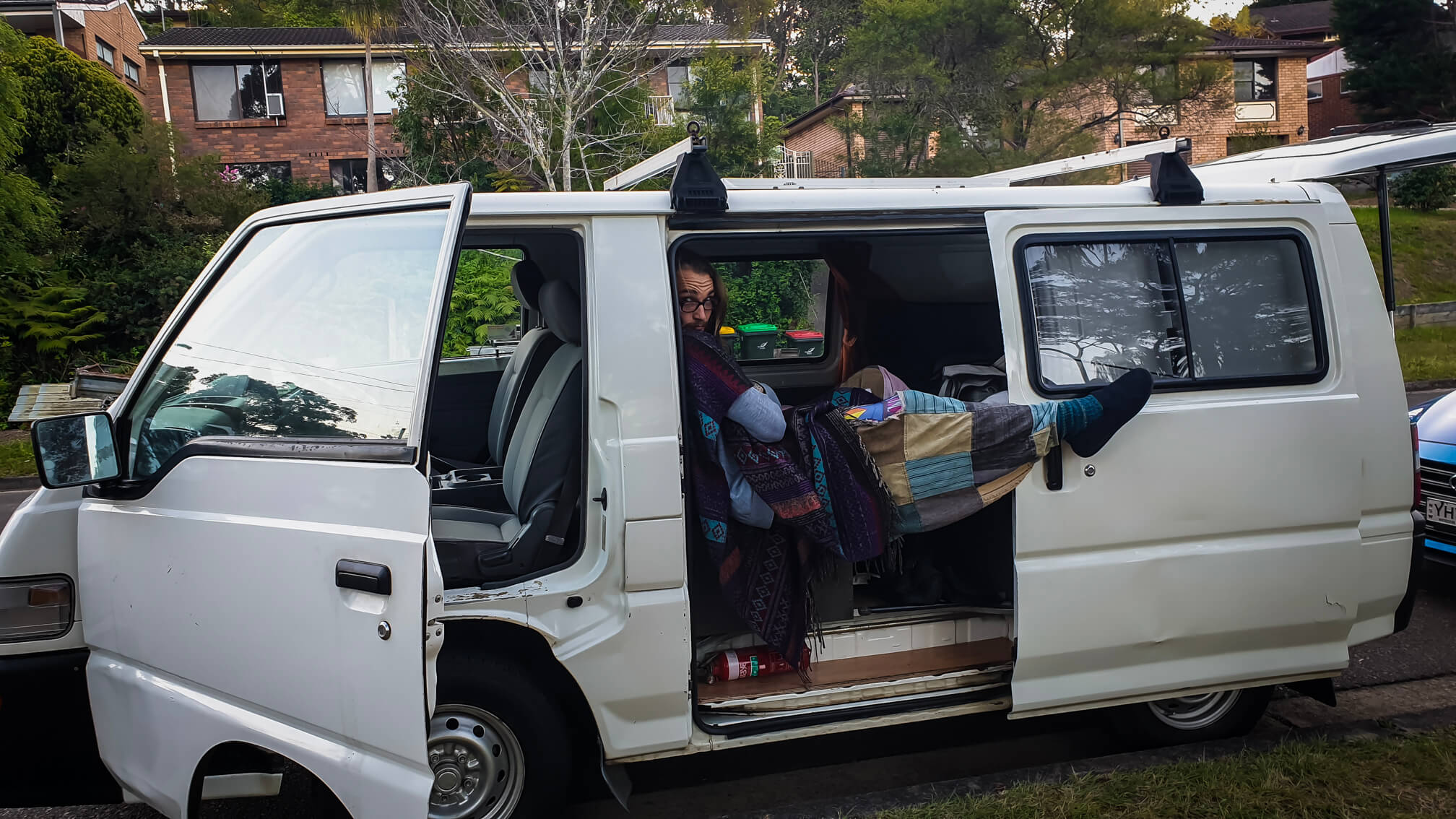
With the popularity of vanlife these days, I’m sure you’ve thought about or at least heard about this craze. I mean, the upsides are many. Your home is with you at all times, you can carry so much more stuff, and you can design your ride exactly as you like. For many, the process of building their house on wheels is just as special as the trip itself.
But there are negatives too: many countries require a carnet de passage that often requires a hefty deposit, repairs can be super expensive, and it’s a whole lot of responsibility. But if you’re determined to make it happen, this is undoubtedly the most comfortable and adventurous way to travel overland, as you can go just about anywhere and won’t be as limited by weather.
By Hitchhiking
My overland hitching journey from UK to Papua New Guinea may not have been completed, but it certainly brought me some incredible (and life-changing) travel memories that I’ll hold on to forever.
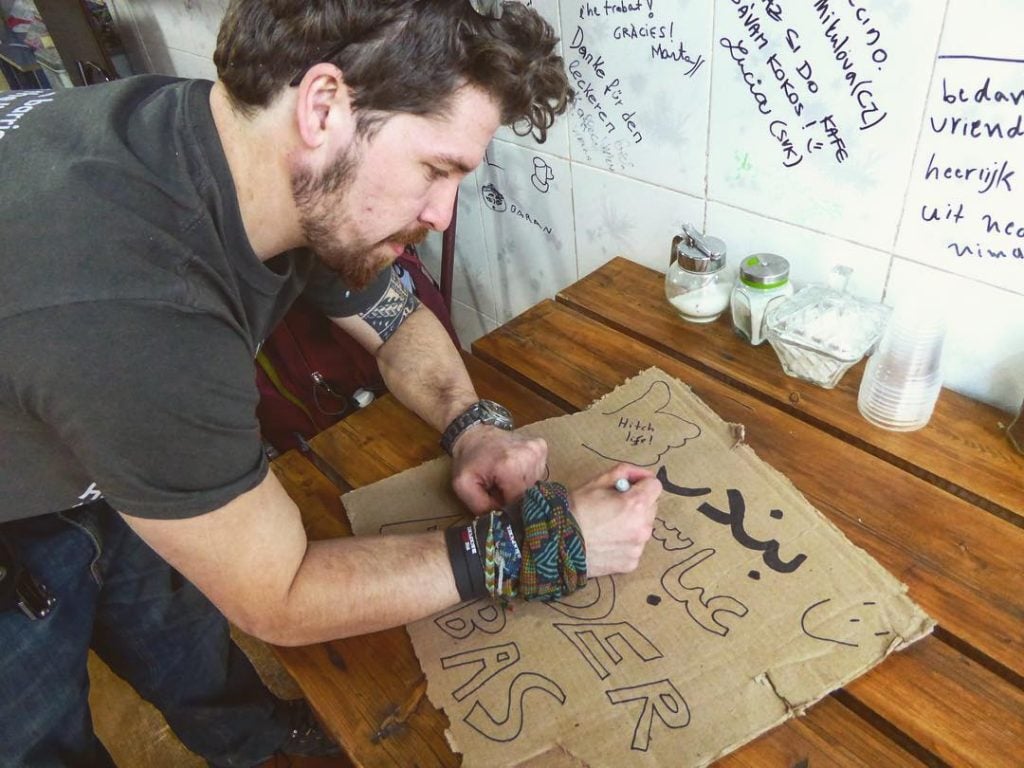
Exploring overland by way of the thumb is not for the faint of heart, or for those lacking patience. But it will bring you closer to strangers and teach you more about the world than any other type of travel. When you’re in a vehicle of any kind (even a bicycle) it somewhat separates you from locals: you’re self-sufficient, right?
But when you’re relying on the kindness of random folks to help you see the world, it opens up doors you didn’t even know were in sight. It leads to unexpected family dinners in local homes, to long chats alongside crackling fires, and to hours spent in random places you would have never visited otherwise. Hitchhiking will change you for the better if you let it, and all you need to get started is a smile, a sign and a stuck-up thumb.
Overland Travel Tips
My top travel tips for making your adventure as smooth as it can be…
1. Do your visa research
While most Westerners are privileged to be able to enter many countries without a visa, you can’t just roll up everywhere. Places like Pakistan, Vietnam, India, and Azerbaijan still require e-visas in advance, and China (often a pain for a lot of overlanders) has a set of very specific rules that usually requires applying for a sticker visa from your home country.
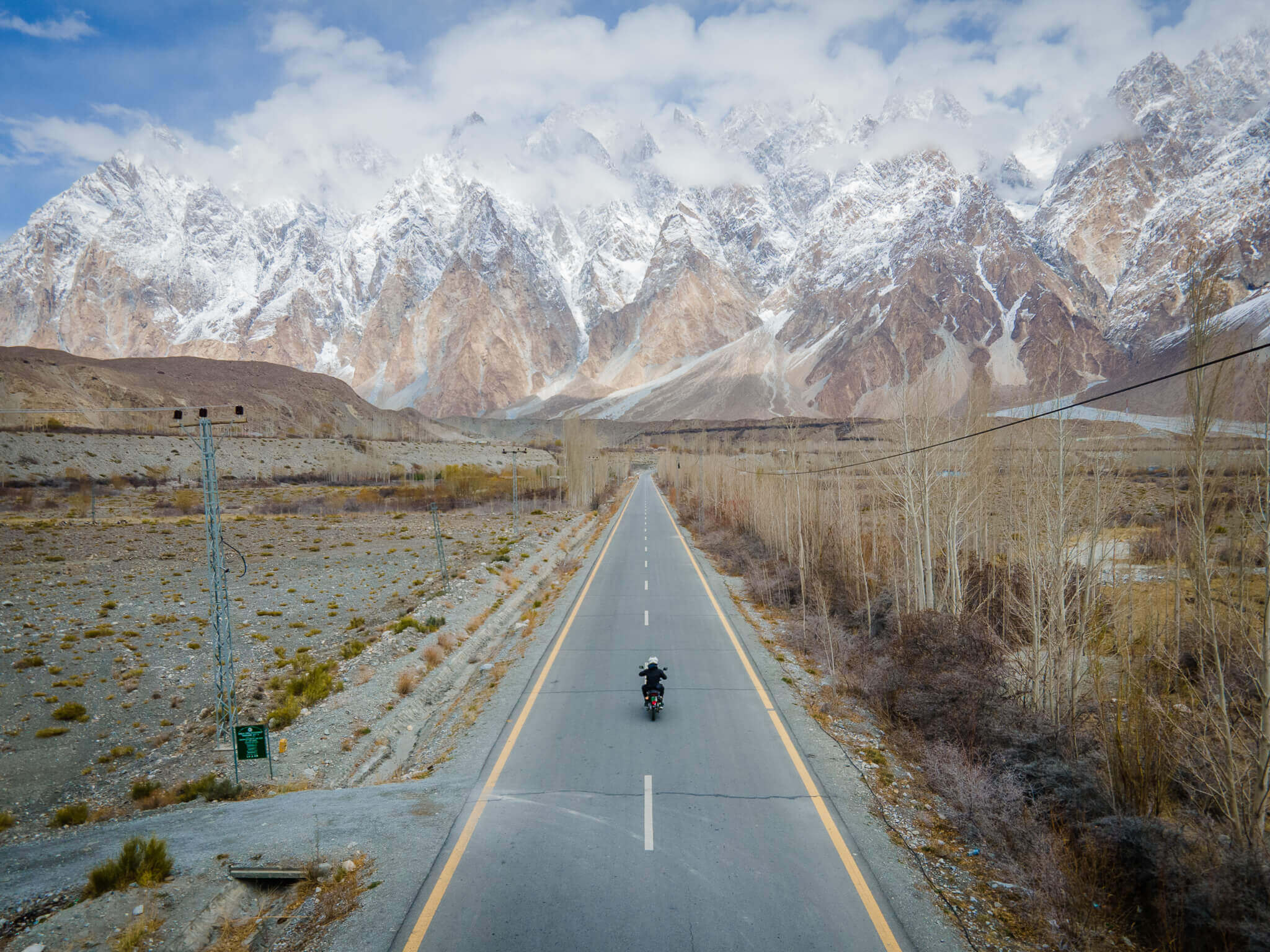
Make sure you read up on every destination you plan to overland through to ensure you don’t find yourself caught out in no man’s land. Sometimes visa rules can change abruptly too, so it’s key to stay on top of them.
2. Bring a LOT of Spare Parts
I cannot stress this enough: if you’re travelling by way of ANY vehicle, it is absolutely essential that you have a good amount of spare parts in tow. Many of the best places to overland are NOT known for their equipment, which means you could potentially be caught out far, far away from civilization.
Spruce up your rig before heading out into super remote areas, and prepare for the unplanned. It’s far better to be a bit overloaded but have everything you need for a mishap than to travel light and become stranded.
3. Don’t forget the little things
You won’t realize how much you need a laundry bag, an eye mask or a good headlamp until you’re stuck in the middle of nowhere with none of the above to be found.
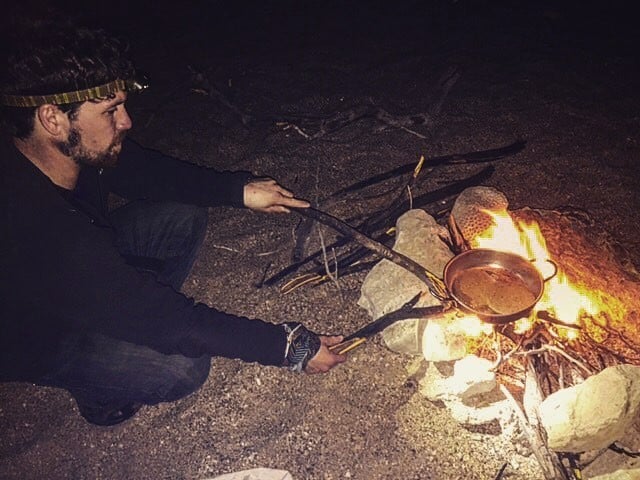
For little things like these, it’s definitely worth it to double up on your supply. You never know when something can get lost or break on the road.
4. Bring a first aid kit
Whether you’re walking, cycling, or traveling in a jacked-out 4×4, the need for a first aid kit remains. You never know when you might need it, but when that time comes, you’ll be incredibly happy you added it to your packing list.
While these honestly aren’t that cheap these days, it’s worth it to splurge on a large, well-stocked one that will actually last you a decent amount of time. If you have any favorite OTC medicines, I highly recommend hoarding them before you head out: pharmacies out in the wild leave much to be desired.
5. Go slow
The art of slow travel goes hand in hand with overlanding, but sometimes it can be easy to fixate on the destination rather than the journey.
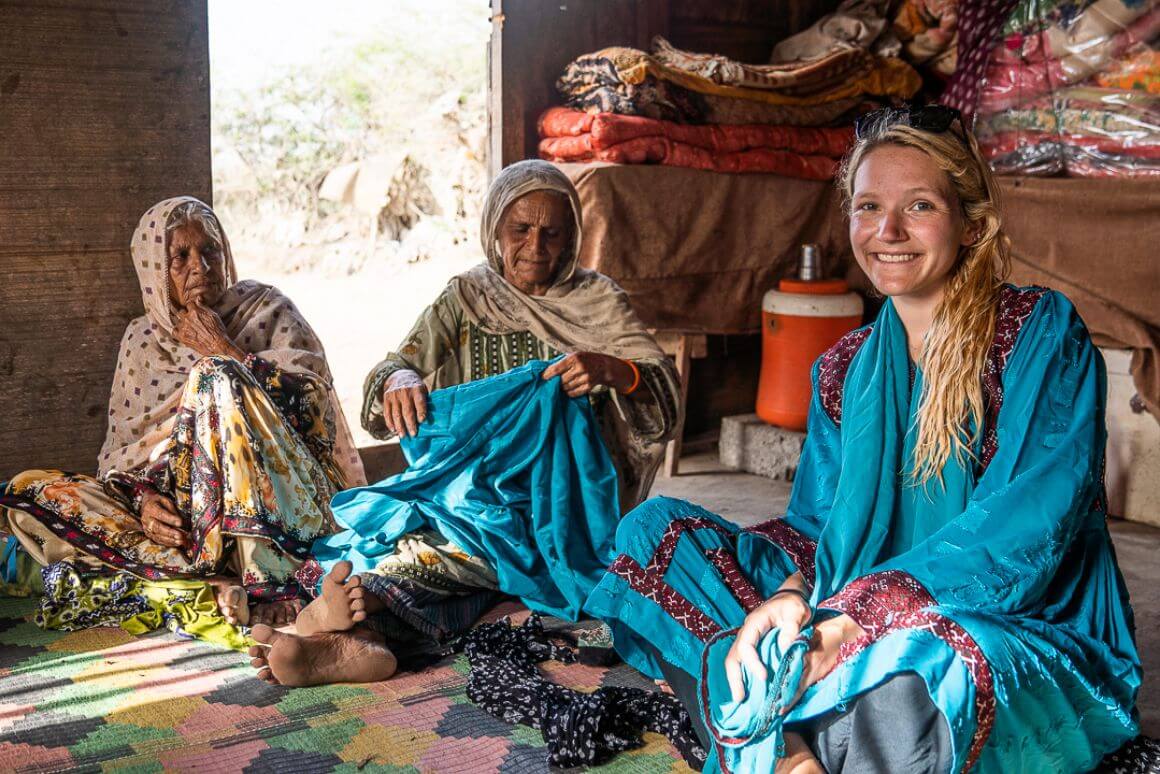
But unless you have a hard deadline to meet, take it easy out there. The whole point of overlanding is to experience the route, not just each individual destination.
Take some rest days where you do nothing but take it all in. Perhaps dive into some journaling, or park yourself at a nice lake or even a beach. The road has infinite pleasures to indulge in.

6. Download Maps in Advance
Even if you’re well prepared with a local SIM card, there will undoubtedly be places without service somewhere along your journey.
Unless you have a paper map like the kind I used to travel with back in the day, get all your necessary navigation downloaded and ready for use when you find yourself with a solid data or Wi-Fi connection.
7. Use Google Translate or Dictionaries
While English speakers are pretty privileged in that we can get by in most of the world, most does not mean everywhere. Take Central Asia for example where Russian rules – you’re going to need some assistance.
While learning a bit of the language in advance is certainly helpful, Google Translate’s offline abilities have truly saved me many times, and it’s a free app you should definitely download. The old-school dictionary method is useful too, especially if you plan to spend time in one place or region for a while.
Overland Travel Packing List
While your specific adventure packing list may look different depending on your method of overlanding, these are a few universal expedition items that anyone will need on the road.
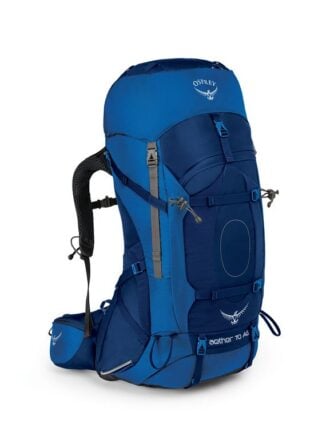
Osprey Aether 70
- Features: Stow-On-The-Go™ trekking pole attachment >
- > External hydration sleeve in backpanel
- > New IsoForm? CM™ hipbelt

ORIA Combination Lock
- Features: 2 pack : set includes 2 zinc alloy 4-digit re-settable combination travel locks >
- > Offers 10,000 combinations
- > Small volume, light weight, fit through the holes of a lot of suitcases
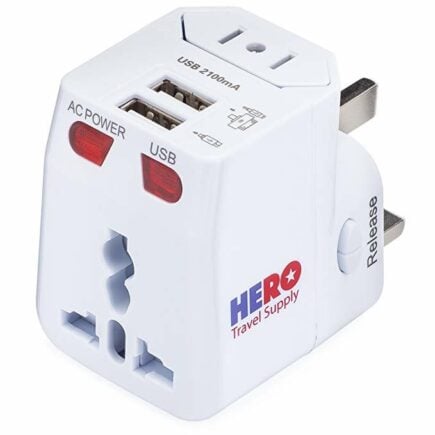
World Travel Adapter
- Features: Input socket: Euro, USA / Japan, Australia / China, United Kingdom (UK version not in Switzerland) >
- > Retractable plugs: Euro, UK, USA / Japan, Australia / China
- > Charge a laptop and two usb devices at once

- Features: Higher resolution display (300 ppi) – with twice as many pixels >
- > Built-in adjustable light – read day and night
- > A single battery charge lasts weeks, not hours

MacBook Pro
- Features: 2.3GHz dual-core Intel Core i5 processor with Turbo Boost up to 3.6GHz >
- > 8GB 2133MHz LPDDR3 memory
- > 128GB SSD storage
Where to Start Overland Travel
You can certainly overland anywhere: from somewhere as simple your home state/province to any country that calls to you, but overall I’d say these are the best places for a truly epic overland travel journey.
Central Asia
The 5 Stans are some of the most adventurous places left on this planet, and they’re home to some of the most mesmerizing roads at that. As of 2023, it’s easy for Western passport holders to travel through all of them (save Turkmenistan), and each one (Tajikistan, Uzbekistan, Kazakhstan and Kyrgyzstan) has something incredible to offer.
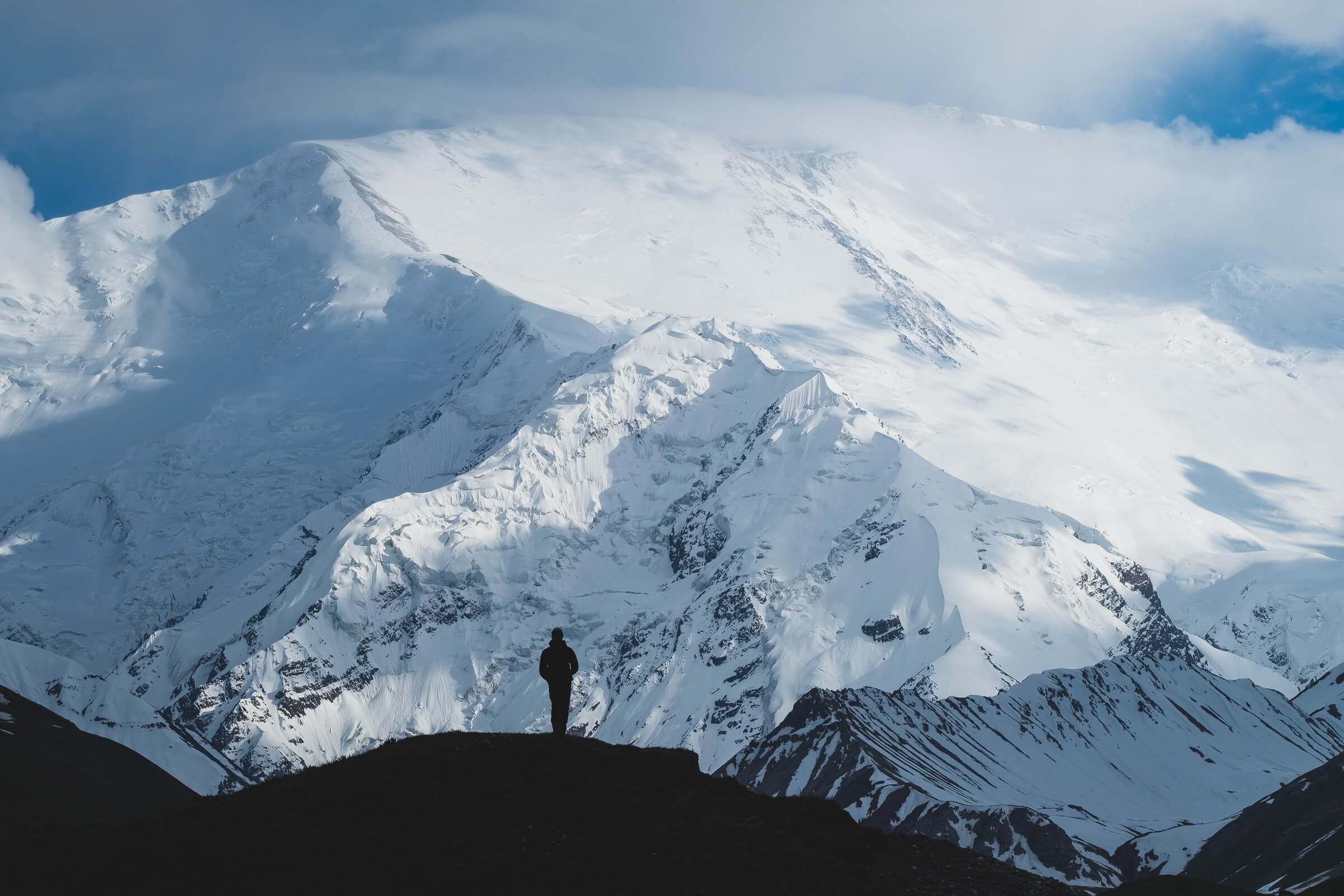
Public transport is also expensive and lacking in most of these locales, which makes overlanding that much more valuable.
All four Stans are all interconnected, safe, and essentially a big old playground for overlanders. Do not underestimate the size of this region though: I’d recommend blocking out at least 3 months to get a real feel for what it has to offer.
South/Southeast Asia
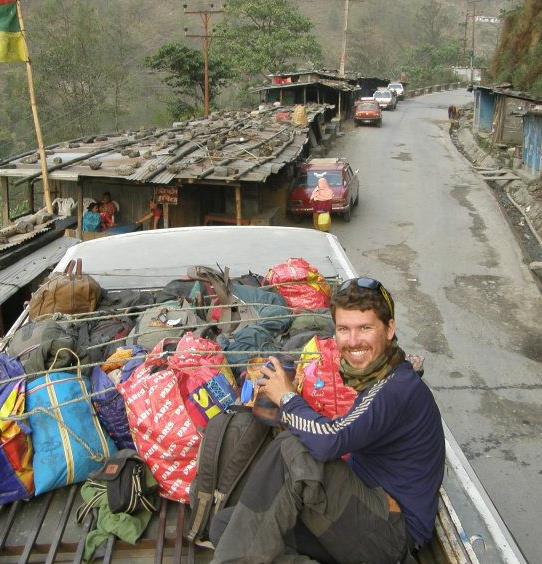
Ah, South and Southeast Asia . Home to some of my favourite countries in the world that have made the most indelible marks on my travels and my life.
India, Pakistan, Nepal and the infamous Banana Pancake trail (Thailand, Laos, Cambodia and Vietnam) are perfect places to give overland exploring a try.
Public transport is widespread, and you’ll get a feel for what it’s like to cross borders. But of course, having your own vehicle will make things even more accessible and give you access to rural areas most do not get to see.
When I rode a rickshaw around India , I found myself incredibly off trail in places that had never even seen foreigners before.
Every year, thousands of Europeans head East to Asia in their own cycles, 4x4s or by way of hitchhiking. And while the journey from Europe to Asia is absolutely epic, you can also opt to travel within the continent too.
With so many countries to check out, it may be the easiest (though certainly not the cheapest) place in the world to overland. Border crossings are simple, and so many countries are interconnected, that it’s a breeze to spend months moving about.
For Brits, Americans and other non-EU nationals, it’s key to be aware of the 90-day visa rule within the European Union. Luckily, there are some fantastic countries out East that you can visit once your time is up.
Many van lifers take to the wide open roads of the United States , with 49 to choose from (discounting Hawaii) and the ability to head north into Canada, I can see why this massive country has become so popular in the world of overland adventuring.
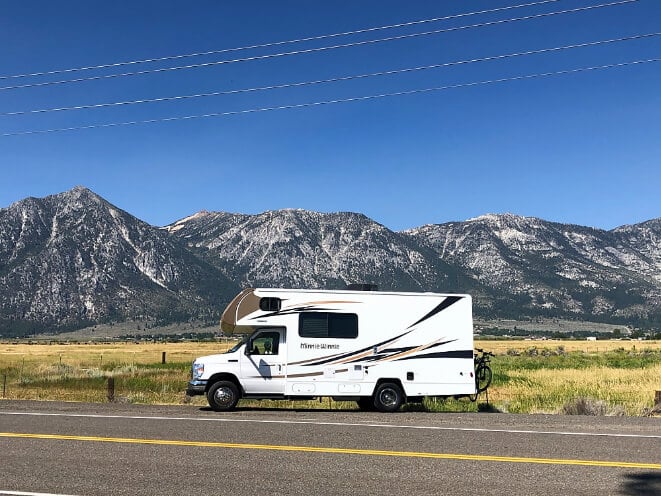
Personally, the USA is not at the top of my bucket list for many reasons, but if you’re already living there and want to get a feel for overland travel, incredible landscapes and opportunities await. Just note that public transportation and hitchhiking are definitely not recommended, as the former barely exists and the latter is not safe .
So van lifers, this is your time to shine. I know many folks who have fixed up relatively cheap vans and set out to see virtually all the states in the Union. If you have limited time or money, definitely focus your energy on the West Coast . That’s where you’ll find all the national parks and the scenery that makes the country worth exploring.
Getting Insured BEFORE Hitting the Road
Regardless of where or how you plan to overland, you should definitely sort some solid travel insurance before leaving home.
ALWAYS sort out your backpacker insurance before your trip. There’s plenty to choose from in that department, but a good place to start is Safety Wing .
They offer month-to-month payments, no lock-in contracts, and require absolutely no itineraries: that’s the exact kind of insurance long-term travellers and digital nomads need.

SafetyWing is cheap, easy, and admin-free: just sign up lickety-split so you can get back to it!
Click the button below to learn more about SafetyWing’s setup or read our insider review for the full tasty scoop.
Final Thoughts on Overland Travel
I hope I’ve now convinced you that your next trip should be an overland one. Ditching flights and committing to crossing borders and provinces on your own wheels (or by way of hitchhiking) will take your travels to entirely new heights.
You’ll have experiences that aren’t possible if you’re jetting about between places, and you’ll get to know each country and region like never before.
With so many ways to make it happen, from cycling to van life to even public buses, overland travel is something that is truly for everyone and anyone.
So what are you waiting for – get to planning and get the hell out there.
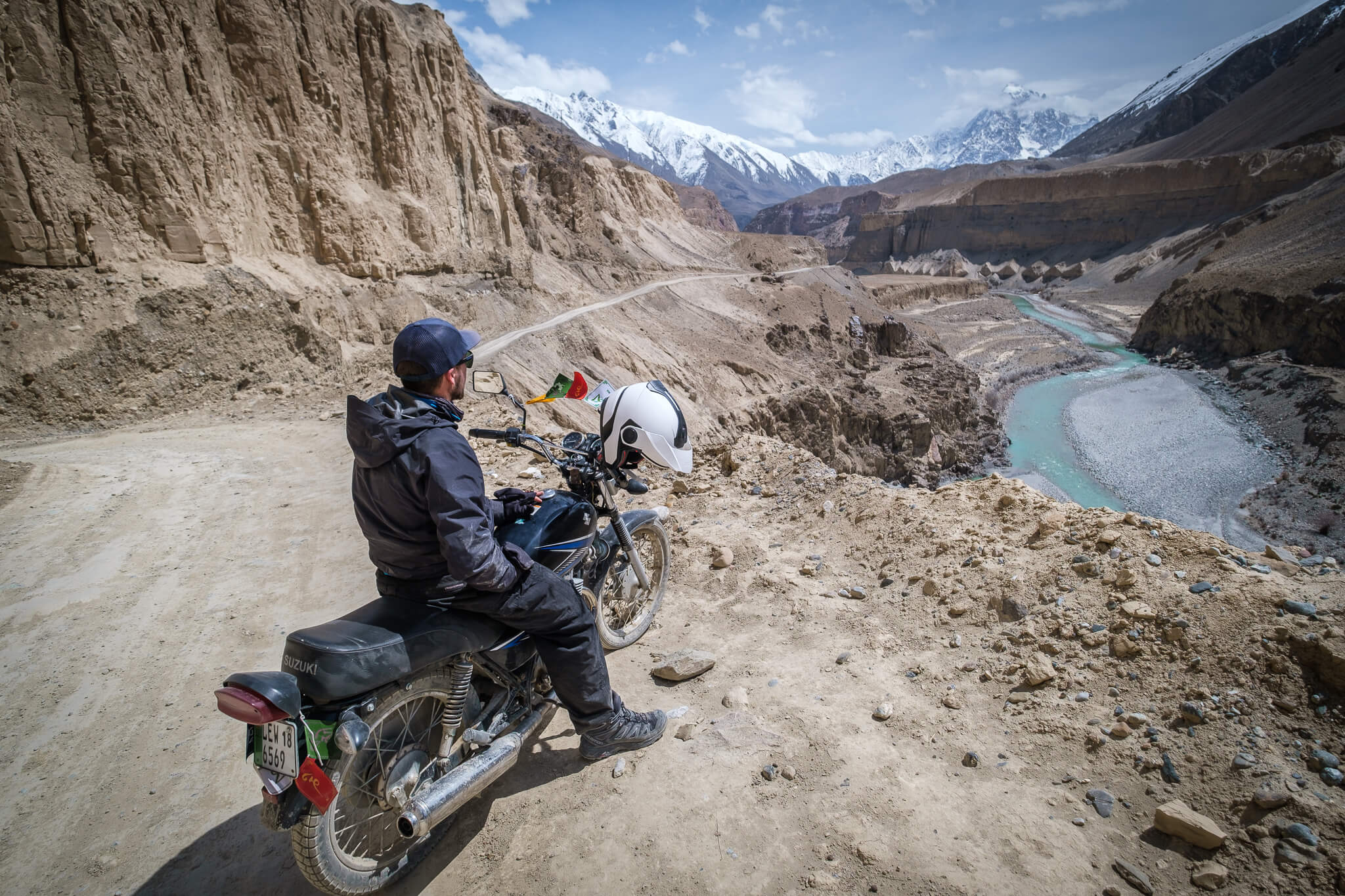
Buy Us a Coffee !
A couple of you lovely people suggested we set up a tip jar for direct support as an alternative to booking through our links. So we created one!
You can now buy The Broke Backpacker a coffee . If you like and use our content to plan your trips, it’s a much appreciated way to show appreciation 🙂

Will Hatton
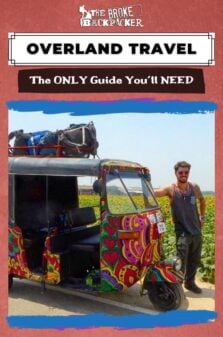
Share or save this post

Will is a freaking trooper!!! I retained great advises from this articles like: Little things we dont think about, hoard your otc in advances, travel by train, buses, mini vans, bike, download your map is a great one when you out of wifi!! Visas if we go to china or india, google translate a must have and to talk t locals and meet people on the journey, enjoy the journey more than the destination, and to buy a kindle to read if no internet, i myself always have been wanted to explore asia and reading this give me ideas on how to get there cheaper and to see the best of all places.
Leave a Reply Cancel reply
Your email address will not be published. Required fields are marked *
Save my name, email, and website in this browser for the next time I comment.
Notify me of followup comments via e-mail.
- D20srd Community Forum
- About This Site
- Frequently Asked Questions
- Changes from the Official d20 SRD
- Open Game License
- d20 Dice Bag
- d20 Encounter Calculator
- d20 Monster Filter
- d20 Spell Filter
- d20 Random Generator
- d20 Demographics Calculator
- d20 Dungeon Generator
- d20 Encounter Generator
- d20 Magic Shop Generator
- d20 Treasure Generator
- Fantasy Name Generator
- Fantasy World Generator
- Adventure Generator
- Inn Generator
- SRD System (WotC)
- SRD FAQ (WotC)
- d20 Modern SRD (WotC)
- Pathfinder SRD (Paizo)
- d20SRD Facebook
- BoLS Facebook
- Lexicanum Facebook
- D&D - RPG News
There are three movement scales, as follows.
- Tactical, for combat, measured in feet (or squares) per round.
- Local, for exploring an area, measured in feet per minute.
- Overland, for getting from place to place, measured in miles per hour or miles per day.
Modes of Movement
While moving at the different movement scales, creatures generally walk, hustle, or run.
A walk represents unhurried but purposeful movement at 3 miles per hour for an unencumbered human.
A hustle is a jog at about 6 miles per hour for an unencumbered human. A character moving his or her speed twice in a single round, or moving that speed in the same round that he or she performs a standard action or another move action is hustling when he or she moves.
Run (×3)
Moving three times speed is a running pace for a character in heavy armor. It represents about 7 miles per hour for a human in full plate.
Run (×4)
Moving four times speed is a running pace for a character in light, medium, or no armor. It represents about 14 miles per hour for an unencumbered human, or 10 miles per hour for a human in chainmail.
Tactical Movement
Use tactical movement for combat. Characters generally don’t walk during combat—they hustle or run. A character who moves his or her speed and takes some action is hustling for about half the round and doing something else the other half.
Hampered Movement
Difficult terrain, obstacles, or poor visibility can hamper movement. When movement is hampered, each square moved into usually counts as two squares, effectively reducing the distance that a character can cover in a move.
If more than one condition applies, multiply together all additional costs that apply. (This is a specific exception to the normal rule for doubling)
In some situations, your movement may be so hampered that you don’t have sufficient speed even to move 5 feet (1 square). In such a case, you may use a full-round action to move 5 feet (1 square) in any direction, even diagonally. Even though this looks like a 5-foot step, it’s not, and thus it provokes attacks of opportunity normally. (You can’t take advantage of this rule to move through impassable terrain or to move when all movement is prohibited to you.)
You can’t run or charge through any square that would hamper your movement.
Local Movement
Characters exploring an area use local movement, measured in feet per minute.
A character can walk without a problem on the local scale.
A character can hustle without a problem on the local scale. See Overland Movement, below, for movement measured in miles per hour.
A character with a Constitution score of 9 or higher can run for a minute without a problem. Generally, a character can run for a minute or two before having to rest for a minute.
Overland Movement
Characters covering long distances cross-country use overland movement. Overland movement is measured in miles per hour or miles per day. A day represents 8 hours of actual travel time. For rowed watercraft, a day represents 10 hours of rowing. For a sailing ship, it represents 24 hours.
A character can walk 8 hours in a day of travel without a problem. Walking for longer than that can wear him or her out (see Forced March , below).
A character can hustle for 1 hour without a problem. Hustling for a second hour in between sleep cycles deals 1 point of nonlethal damage , and each additional hour deals twice the damage taken during the previous hour of hustling. A character who takes any nonlethal damage from hustling becomes fatigued .
A fatigued character can’t run or charge and takes a penalty of -2 to Strength and Dexterity. Eliminating the nonlethal damage also eliminates the fatigue.
A character can’t run for an extended period of time.
Attempts to run and rest in cycles effectively work out to a hustle.
The terrain through which a character travels affects how much distance he or she can cover in an hour or a day (see Table: Terrain and Overland Movement ). A highway is a straight, major, paved road. A road is typically a dirt track. A trail is like a road, except that it allows only single-file travel and does not benefit a party traveling with vehicles. Trackless terrain is a wild area with no paths.
Forced March
In a day of normal walking, a character walks for 8 hours. The rest of the daylight time is spent making and breaking camp, resting, and eating.
A character can walk for more than 8 hours in a day by making a forced march. For each hour of marching beyond 8 hours, a Constitution check (DC 10, +2 per extra hour) is required. If the check fails, the character takes 1d6 points of nonlethal damage . A character who takes any nonlethal damage from a forced march becomes fatigued . Eliminating the nonlethal damage also eliminates the fatigue. It’s possible for a character to march into unconsciousness by pushing himself too hard.
Mounted Movement
A mount bearing a rider can move at a hustle. The damage it takes when doing so, however, is lethal damage, not nonlethal damage . The creature can also be ridden in a forced march , but its Constitution checks automatically fail, and, again, the damage it takes is lethal damage. Mounts also become fatigued when they take any damage from hustling or forced marches.
See Table: Mounts and Vehicles for mounted speeds and speeds for vehicles pulled by draft animals.
Waterborne Movement
See Table: Mounts and Vehicles for speeds for water vehicles.
Moving In Three Dimensions
Tactical aerial movement.
Once movement becomes three-dimensional and involves turning in midair and maintaining a minimum velocity to stay aloft, it gets more complicated. Most flying creatures have to slow down at least a little to make a turn, and many are limited to fairly wide turns and must maintain a minimum forward speed. Each flying creature has a maneuverability, as shown on Table: Maneuverability . The entries on the table are defined below.
Minimum Forward Speed
If a flying creature fails to maintain its minimum forward speed, it must land at the end of its movement. If it is too high above the ground to land, it falls straight down, descending 150 feet in the first round of falling. If this distance brings it to the ground, it takes falling damage. If the fall doesn’t bring the creature to the ground, it must spend its next turn recovering from the stall. It must succeed on a DC 20 Reflex save to recover. Otherwise it falls another 300 feet. If it hits the ground, it takes falling damage. Otherwise, it has another chance to recover on its next turn.
The ability to stay in one place while airborne.
Move Backward
The ability to move backward without turning around.
A creature with good maneuverability uses up 5 feet of its speed to start flying backward.
How much the creature can turn after covering the stated distance.
Turn in Place
A creature with good or average maneuverability can use some of its speed to turn in place.
Maximum Turn
How much the creature can turn in any one space.
The angle at which the creature can climb.
How fast the creature can climb.
The angle at which the creature can descend.
A flying creature can fly down at twice its normal flying speed.
Between Down and Up
An average, poor, or clumsy flier must fly level for a minimum distance after descending and before climbing. Any flier can begin descending after a climb without an intervening distance of level flight.
Evasion And Pursuit
In round-by-round movement, simply counting off squares, it’s impossible for a slow character to get away from a determined fast character without mitigating circumstances. Likewise, it’s no problem for a fast character to get away from a slower one.
When the speeds of the two concerned characters are equal, there’s a simple way to resolve a chase: If one creature is pursuing another, both are moving at the same speed, and the chase continues for at least a few rounds, have them make opposed Dexterity checks to see who is the faster over those rounds. If the creature being chased wins, it escapes. If the pursuer wins, it catches the fleeing creature.
Sometimes a chase occurs overland and could last all day, with the two sides only occasionally getting glimpses of each other at a distance. In the case of a long chase, an opposed Constitution check made by all parties determines which can keep pace the longest. If the creature being chased rolls the highest, it gets away. If not, the chaser runs down its prey, outlasting it with stamina.
Moving Around In Squares
In general, when the characters aren’t engaged in round-by-round combat, they should be able to move anywhere and in any manner that you can imagine real people could. A 5-foot square, for instance, can hold several characters; they just can’t all fight effectively in that small space. The rules for movement are important for combat, but outside combat they can impose unnecessary hindrances on character activities.
The Hypertext d20 SRD TM is owned by BoLS Interactive LLC .
The text on this page is Open Game Content, and is licensed for public use under the terms of the Open Game License v1.0a .
‘d20 System’ and the ‘d20 System’ logo are trademarks of Wizards of the Coast, Inc. and are used according to the terms of the d20 System License version 6.0. A copy of this License can be found at www.wizards.com/d20 .
Goodman Games
Fan Forums Archives - Closed to New Posts
Skip to content
- Goodman Games Board index Dungeon Crawl Classics Role Playing Game Judges' Forum
Overland Travel
Moderators: DJ LaBoss , michaelcurtis , finarvyn , Harley Stroh
Post by Rostranor » Thu Mar 21, 2013 2:19 am
Re: Overland Travel
Post by finarvyn » Thu Mar 21, 2013 10:46 am
Return to “Judges' Forum”
- Return to Goodman-Games
- Dungeon Crawl Classics Role Playing Game
- ↳ DCC College - New Judges Start Here
- ↳ DCC Day
- ↳ Read More About DCC Day Here!
- ↳ DCC RPG Adventure Modules
- ↳ Road Crew Reports
- ↳ DCC RPG Third Party Publishers
- ↳ Rules discussion
- ↳ Magic and Spells
- ↳ Characters
- ↳ Judges' Forum
- ↳ DCC RPG Community
- ↳ Convention Coverage
- ↳ DCC RPG General
- ↳ Cyclops Cons & more!
- The Other Worlds of DCC RPG
- ↳ DCC Dying Earth
- ↳ DCC Empire of the East
- ↳ DCC Lankhmar
- ↳ Mutant Crawl Classics RPG
- ↳ Xcrawl (Xcrawl Classics and prior editions)
- ↳ The Gongfarmer's Almanac
- ↳ 2019 Project
- ↳ Articles
- ↳ Coordinator's Corner
- ↳ Help Wanted
- ↳ Resources
- ↳ Crawl-By-Post
- Fiction Crawl Classics
- ↳ Appendix N
- ↳ Tales from the Magician's Skull
- Other Goodman Games Products
- ↳ Original Adventures Reincarnated
- ↳ Fifth Edition Fantasy - Adventure Modules
- ↳ System Neutral Products and More
- But WAIT, There's More...!
- ↳ Goodman Games General
- ↳ All things A-R-T related
- ↳ Everything Else
- ↳ Suggestion Box
- ↳ Older Products and Discussion
- ↳ Metamorphosis Alpha
- ↳ Age of Cthulhu
- ↳ DragonMech
- ↳ Etherscope
- ↳ Wicked Fantasy Factory
- ↳ Eldritch Role-Playing System
- ↳ Adventure Design
- ↳ d20/D&D Conversation
- ↳ 4E Products
- ↳ 3E/4E Dungeon Crawl Classics Adventure Modules #1-66 (pre-DCC RPG)
- ↳ Dungeon Crawl Classics - General
- ↳ Castle Whiterock
- ↳ DCC Modules - 3E
- ↳ DCC Modules - 4E
- ↳ DCC Modules - Alternate Systems (1E, C&C, etc.)
- ↳ DCC RPG Beta Archives
- ↳ Playtest Feedback: Characters
- ↳ Playtest Feedback: Combat
- ↳ Playtest Feedback: Spells and Magic
- ↳ Playtest Feedback: Other
- ↳ Actual Play Reports
- ↳ ---> CHECK THIS OUT NOW <----
- Developer Forums
- ↳ DCC RPG Private Playtest, Round One
- ↳ DCC
- ↳ DCC-2007 Tournament
- ↳ Spellburn
- ↳ Xcrawl 2007 Tournament
- ↳ Scheduling
- ↳ DCC-2008 Tournament
- ↳ DragonMech Battles Development
- ↳ Lost Tribes
- ↳ Year Six Tournament
- ↳ DCL
- ↳ Xcrawl Playtest Forum
- ↳ Old Threads
- ↳ Dungeoneer
- ↳ Online Games
- ↳ DragonMech: Destiny of Steam and Steel
- ↳ Archived Judges Guild
- Goodman Games Board index
- All times are UTC
Powered by phpBB ® Forum Software © phpBB Limited
Privacy | Terms
We Play in a Society
Remixing, converting, and analyzing Pathfinder 2e adventures!
Thursday, January 11, 2024
Pathfinder 2e overland travel.
Hey Folks! Today I'm going to be going through my homebrew Overland Travel rules, including both the rules themselves and advice on how to use them. I've been working on them on and off for several years, and have used them across multiple campaigns, most recently for Chapter 2 of Strength of Thousands Book 3: Hurricane's Howl . In the next article, I'll use that campaign as a case study to see these rules in action!
This system is not for every game, table, or situation! It works best when resource management is important, when time is a major factor, and when you want to create the feeling of a living, dangerous, wonderful world. In other words, when travel is part of the adventure. What those things are not true, feel free to either do some sort of travel montage or skip through travel entirely!
Travel Rules
I am only going to go through the basics of the rules in this post so as to keep it relatively contained - here are the full rules ! It includes everything in this post (other than some of the explanations), plus lots of charts and further detail to flesh things out. It also has example rules for Red Hand of Doom, since that's what I'll be using this for.
Tracking Time
Each day is made up of 6 4-hour periods called watches : Dawn, Morning, Afternoon, Evening, Night, and Pre-Dawn. Each period, the party travels a number of miles based on their speed (usually for 3 periods per day). There are three types of watches:
- Rest Watches are spent sleeping and recovering.
- Active Watches are spent adventuring or similar.
- Travel Watches are spent traveling long distances.
You can take 3 Active or Travel watched per day without penalty (see "Exhaustion" below for more).
Travel Watches
During a Travel Watch, you:
- Track time/tick durations
- Declare a travel pace and travel activities
- Roll for (and resolve) encounters
- Resolve travel activities (rolling as needed.
- Track distance (navigator rolls survival if not following a road or similar)
At the end of the day, the party will also perform camping activities (you can do some Kingmaker cooking if you want! The rest of those probably aren't worth it though), mark off rations , and similar end of day tasks.
Travel Pace
The party can pick from 4 total paces:
- Exploration: 4 miles per watch, 12 in a standard day. +2 CB to navigate, cannot attempt stealth, chance of encounters doubled as you actively explore an area to find hidden information or landmarks.
- Slow: 6 miles per watch, 18 in a standard day. +2 CB to navigate, can attempt stealth, 50% chance of avoiding threats as you carefully pick your way through the wilds.
- Medium: 8 miles per watch, 24 in a standard day. Cannot attempt stealth, no other bonuses or penalties.
- Fast: 10 miles per watch, 30 in a standard day. -2 CP to perception and survival checks, cannot attempt stealth.
That travel pace might be modified by terrain, in which case multiple the starting pace by the areas terrain modifier (3/4, 1/2, or 1/4) to find the actual distance travelled. Mounts make you faster, but only on good terrain. This can theoretically all get pretty complicated, so the full doc has several charts to make this easy to reference (minimal math required!)
Travel Activities
Unless the party is following super clear landmarks (like a road or river), one PC must navigate by rolling survival, and another PC can aid against DC 15 (the GM might raise this for supernatural terrain, but I wouldn't for mundane terrain). Everyone else can either cover tracks (if travelling slow), forage (if travelling slow), scout ahead (if travelling slow or medium), lead pack animals (at any pace), or keep watch (at any pace). Characters who are fatigued cannot take travel activities, as per usual (though you can still control one animal while fatigued, you just couldn't ride one and pull another effectively)
Random Encounters
At the end of each watch, roll the Hazard Die (1d6) to see what happens! If travelling at a slow pace, there’s a 3:6 chance threats will be avoided. If exploring an area in depth, or in dangerous territory, the GM will check for encounters twice as often (possibly ignoring weather shifts on the 2nd roll each watch).
- Threat. Something scary approaches! Possibly a combat, though not necessarily (I recommend rolling reaction check and encounter distance ).
- Weather Shift. Either minor temperature shifts or major storms depending on the region!
- Faulty Supplies. Rations rot (or animals get into the food), water runs out, paper/wood items rot, metal rusts, etc. Based on terrain! And precautions may negate this.
- Terrain Changes. Something slows the party down or gets in their way! Heavy mud, thick thorns, congested roads, etc. One way or another, it slows the party down (unless they come up with clever ways around it! Having them run into the same problem multiple times might provoke them to come up with a plan, feel free to reward their creativity!)
- Non-Encounter. Describe something in the area! A rare bird flies by. The stream of refugees is heavier here. You hear haunting music on the breathe. The goal here is to bring out the vibes of the area without necessarily causing problems for the PCs!
- Discovery. A clue to a mystery, a dungeon off the side of the road (possibly only visible to scouts!), signs of a nearby hidden or lost culture, or other things that provide opportunities to the PCs! Or, tbh, even just "easily accessible berries so the PCs can add +1 ration" if you don't wanna come up with something more complicated.
Each of these will look very different in a dangerous area versus safe countryside. Threats might be deadly monsters or annoying antagonists! Weather shifts might be terrible storms or slight changes in temperature. Terrain changes might block the path entirely (logs across roads, broken bridges) or just slow the party (difficult terrain, congested roads).
If the party takes proper precautions, many of these might be avoided! Especially at night: having a hidden camp will avoid most encounters, and having obvious guards and a fire might ward of many as well; putting food up in a bag will likely prevent rot from condensation or animals getting in; having the right gear or spells might counter the negative effects of weather.
If you want fewer encounters, feel free to roll the Hazard Die once per day instead of once per watch , or even once per week for particularly long journeys. Make sure to adjust things to be relevant to that timescale! E.g. in longer timescales, don't give out conditions that will automatically clear at the end of the day, either give out multiple levels or just have them remain until civilization.
In my Red Hand of Doom game I've been rolling once per watch, but ignoring complications that don't make sense, treating them as Non-Encounters instead. This mainly includes Terrain Changes while resting and Threats in relatively safe territory (to make the Civilization vs. Wilderness divide more stark), but I also try to reward clever preparation or choosing safety! So weather might still occur while they're sleeping indoors, but probably won't effect them, if they put their food up in a bear bag, that has a chance to mitigate Faulty Supplies, etc.
Characters can take 3 travel or active watches per day without risk of exhaustion. There are several things that might either automatically make you fatigued or might make you roll a Fortitude save not to be (either against the Navigation DC, a level-based DC if you're adventuring, or something similar):
- If you take more than 3 travel/active watches, save or gain fatigue
- For each additional, you automatically gain fatigue (based on Paizo's "fatigued after 16 hours awake" rule)
- Each day without food, save or gain fatigue.
- Each day without water, automatically gain fatigue.
- Many travel complications (especially weather) might cause fatigue as well.
Fatigue Stacks!
This is a rules change! When you would become fatigued , you instead become f atigued 1 . If you would become fatigued again, increase your fatigued value. This has no additional effect, but takes longer to remove. If you ever reach fatigued 5 , you can’t take travel or active watches until you reduce that condition. As per usual, you can’t navigate/forage/scout/etc. while fatigued.
Rest Watches
You need to rest for 2 watches per day, which includes sleep and daily preparations. Without proper gear (bedroll and shelter), you require an extra watch of rest. If you don’t get enough rest, you take a level of fatigue.
Clearing Fatigue
You clear 1 fatigue if you get enough rest (see above), eat 1 ration, and drink 1 gallon of water. You can sleep in to clear extra fatigue at a rate of 1 extra fatigue per extra watch of sleep. Large creatures like horses require 4x as much food, and tiny creatures such as familiars only require 1/4 the food.
You can spend an hour on watch without interrupting your sleep. This means that a group of 8 can fully rest in only 2 watches, but smaller groups need to spend more time. Groups of 3-7 require 3 watches to rest with lookouts, and groups of 2 require 4 watches. Note that some items or abilities (such as rings of sustenance reduce the required rest time to 1 watch) might allow a party to rest and keep watch in less time (the ring allows a party of 4 to fully rest in 2 watches as long as one member has one).
Special Rest Benefits
PCs who rest in proper beds ( private rooms ) clear fatigue twice as fast, and extravagant suites clear all fatigue in 2 watches. A comfortable/fine lifestyle (respectively) has the same effect.
If they're not worried about cookfires giving them away, PCs can also cook as per Kingmaker! Eating a good meal at a tavern before setting off can count as a hearty meal (with a square meal granting a success, and a fine meal a critical success, as do comfortable/fine lifestyles respectively).
Exploration Encounters
If complications are common, they should usually not be combat encounters. Instead, use encounters that attack whatever should be scarce - time if the journey is time sensitive, fatigue if they are expecting combat around any corner (i.e. actively fighting through enemy territory), or supplies that they need to continue. Or just use them to build the vibes you want for your game world!
I used a simple 1d6 table for to see what category we'd roll on, and then a second die to to randomize within a category, but you can totally use a 2d6 table (as Bob World Builder recommends) or a full D66 / D100 table if you want more granularity.
If you do use combat encounters, I recommend using them in one of three ways:
- Progressing the story - If travel is part of your adventure, consider having scripted encounters at certain points (I'm a big fan of saying "the next encounter after they've gone 20 miles is [x]"), as the party catch up to their quarry, get closer to a conflict, etc.
- Showcasing Factions - Who lives around here, and what might they want? Maybe factions attempt to waylay the party, or maybe the party comes across a fight between factions. They might even come across someone who's only hostile because they mistake the party for members of a certain faction!
- Reinforcing Themes - What creatures might live around here? Or what problems are pervasive in the world? Random encounters should tell the players something about the world, even if that's just "there's a lot of spiders in this forest!"
As mentioned above, however, most encounters probably shouldn't be combat! I recommend about 1/6 potential combat encounters (even more than normal, it should be possible for the party to talk/sneak their way past), potentially flexing up or down based on the length of your journey and how much game time you want to spend on it.
Here are some non-combat complications for you to use! Many are stolen from various places on the internet.
- Lost/Damaged Supplies!
- Food spoils! (mark off an extra ration each, or if you want something more complicated DC10 flat check for each ration you carry or spoil)
- Leaky waterskins! (make a check to find more water or risk fatigue; on a failure, you waste time)
- Supplies swept away! (while fording a river, Reflex save or lose rations, adventuring gear, or even entire bags of things if you're feeling especially mean!)
- Animals get into bags, definitely targeting rations and possibly other things based on type (i.e. rats might chew up scrolls and other paper goods, if they fail a flat check, termites might chew up wood, large animals might smash potions, etc.)
- Lost/Damaged Equipment! (in the Hazard Die system I combined these)
- Rusting Metal / Rotting Wood (any metal or wooden/paper equipment respectively might become broken and need to be repaired/treated using tools not available in the wilds! So not permanently, just until you get to town basically. Everyone rolls 1d6: on a 2-3, this happens to 1 item, or 1d6 if they roll a 1.
- Fragile items like scrolls have a 2:6 chance to be destroyed instead of broken (maybe higher chance for non-magical items).
- Precautions might give you a chance to ignore this (maybe 3:6 per item? or 1d3 instead of 1d6 on a 1?), might ignore it outright, or might stop it from affecting certain items (like scrolls in a waterproof scroll case).
- Damaged armor from training/sparring (if someone has quick repair they're fine, otherwise it takes a period to fix, and the armor takes a -1 or -2 to AC until it's fixed)
- A river crossing, quicksand, or animals might mess with non-food equipment as well!
- Difficult Terrain!
- Rough Ground (either everyone saves vs. Exhaustion or the person with the worst Fortitude makes a save, losing a period of travel on a failure)
- Thick undergrowth! (everyone needs to either make an Athletics check or use magic or something to help clear it - everyone has to make a check, even if they suck at it, and if not enough people succeed you lose time - one of my players used fire magic, for example!)
- Deep River Crossing / Broken Bridge - either lose a travel period finding a way around or find away across! Clever or magical solutions might just work, otherwise gear might be swept away
- Tree Blocking the Road (only matters if they have a cart, obviously - Athletics checks to move it, failures take more time)
- Unexpected Crevice (either not on map or new/from earthquake like river, either find a way across and risk falling in or find a way around and lose time)
- Quicksand ! Roll Perception vs. its Stealth or be trapped! I'd probably throw in some way for folks to lose items/etc. in it
- Many other hazards (especially complex hazards) can make interesting travel complications, but they take more time to resolve at the table and so should be avoided if you're trying to keep travel relatively snappy
- Inclement Weather! (replace any DCs with the Navigation DC)
- Heat Wave! (save vs. exhaustion if you are traveling faster than a slow pace)
- Heavy Rain ! (save vs. exhaustion every period of travel for 1d4 periods, anyone far enough away is concealed)
- Mild Chill (if not wearing appropriate clothes, save or be clumsy! when you reach clumsy 3 you're also fatigued)
- Extreme cold (if not wearing appropriate clothes, save vs. exhaustion every period! If you are, instead save or be clumsy, and become fatigued at clumsy 3)
- Fog ! (also applies a -2 to navigate, or -4 if moving fast. If you're feeling mean, you can have this make the terrain dangerous , and roll for further encounters every travel period)
- There are lots of other weather hazards on Archives of Nethys that you can use for inspiration, but I'd tailor them more towards these Travel rules if there aren't also going to be combat encounters.
- You can tailor this to your environment, it could even all be the same type of thing (i.e. different degrees of cold, or different amounts of rain possibly culminating in a flood)
- An animal that takes a liking to the party and wants to come with them, but they have to feed it (1 ration every 2 days) and it might wake them up in the middle of the night! (1/6 chance)
- Stampede!! (maybe they're running from something, like a forest fire or monster, but the party should probably get to choose whether they want to interact with it)
- Travelling merchant who might have supplies!
- Scouts/refugees/travelers from something nearby you wanna set up
- A shepherd is herding their animals in front of you, moving at a slow pace! It would be very inconvenient for them for you to burst through and scatter all the sheep...
- Food Poisoning! (Fortitude save or lose a period of travel - ask who was cooking the night before lol)
- Someone travelling with the party gets sick and can't travel (if it's an escort quest this is basically "waste time" unless the party can think if a way to bring them without having them move, otherwise it's an interesting moral dilemma)
- Signs of something else (i.e. a carcass killed by a nearby monster, tracks of some large creature or another traveling party, items left behind by fleeing people, etc.). This can be a quest hook, a little bit of cool treasure, or just a warning that something else is near...
- An abandoned building off the beaten path! Possible treasure, possible danger, maybe even a full dungeon (or mini-dungeon, I've used 5 room dungeons to great effect)
- A shrine, with several offerings of money, food, etc., whatever the players might want/need. If they leave offerings of their own, they gain a hero point! If they take anything, they lose a hero point (don't tell them until after the party moves on), and are possibly subjected to some sort of curse... They can theoretically trade items without gaining or losing hero points, as long as the gifts are more valuable than the things they take.
- The clouds are especially fluffy today! (or some other seemingly innocuous detail that you tell them is the complication... the idea is to possibly get them freaked out over nothing)
Closing Thoughts
There are certain elements of these rules that are still in playtest, and I'll likely be making tweaks, but I think we're in a good place! I cut a lot of previous more finicky rules that had tougher sleep/food requirements, replacing them with stacking fatigue, as well as a weirder encounter system that had threats on a 1, other things on a 6+, and a variable die size based on danger (the Hazard Die does it better). I playtested these previous versions pretty heavily, primarily when running Hurricane's Howl (SoT Book 3 chapter 2). Even that version, despite the pain points, led to some really cool decision making!
So far, the current version feels good in play! I've only played a single session with the current rules, but the system has been working really smoothly so far. Stacking fatigue isn't that hard to track, rules seem to more or less line up with intuition, and there seems to be a good balance of "things happening" while keeping things moving. Most "encounters" don't take up that much in-game time - a skill check here (the kineticist has been great at ignoring difficult terrain), a moral dilemma there (do we kill the injured alchemically-altered wolf, or take the time to heal it?), and the feeling of a wide and vibrant world leading to several cases of the players finding creative solutions to annoying problems and our dwarf player remarking "I don't know why anyone lives above the ground" after a series of bad weather led to the players spending a day sheltering in a cave.
I'm excited to see what tweaks can be made to make them even better! Already I adjusted some little elements of encounters (the rot/rust were a little too finicky, for example, so I edited the above to be a simplified version), and I'm sure there will be more edge cases that come up when time is tighter. Still, I'm very happy with where things are at right now.
Let me know what you think!
No comments:
Post a comment, rhod sidequest - the mad mage's manor.
RHoD Masterpost There's a throwaway line on page 52 that says "The razorfiend has done quite well for itself, having plundered a ru...


Subscribe to the Open Gaming Network and get everything ad-free!
There are three movement scales, as follows:
- Tactical , for combat, measured in feet (or 5-foot squares) per round.
- Local , for exploring an area, measured in feet per minute.
- Overland , for getting from place to place, measured in miles per hour or miles per day.
Modes of Movement
While moving at the different movement scales, creatures generally walk, hustle, or run.
A walk represents unhurried but purposeful movement (3 miles per hour for an unencumbered adult human). A character moving his speed one time in a single round, is walking when he or she moves.
A hustle is a jog (about 6 miles per hour for an unencumbered human). A character moving his speed twice in a single round, or moving that speed in the same round that he or she performs a standard action or another move action, is hustling when he or she moves.
Moving three times speed is a running pace for a character in heavy armor (about 7 miles per hour for a human in full plate).
Moving four times speed is a running pace for a character in light, medium, or no armor (about 12 miles per hour for an unencumbered human, or 9 miles per hour for a human in chainmail.) See Table: Movement and Distance for details.
Tactical Movement
Tactical movement is used for combat. Characters generally don’t walk during combat, for obvious reasons—they hustle or run instead. A character who moves his speed and takes some action is hustling for about half the round and doing something else the other half.
Hampered Movement
Difficult terrain, obstacles, and poor visibility can hamper movement (see Table: Hampered Movement for details). When movement is hampered, each square moved into usually counts as two squares, effectively reducing the distance that a character can cover in a move.
If more than one hampering condition applies, multiply all additional costs that apply. This is a specific exception to the normal rule for doubling.
In some situations, your movement may be so hampered that you don’t have sufficient speed even to move 5 feet (1 square). In such a case, you may use a full-round action to move 5 feet (1 square) in any direction, even diagonally. Even though this looks like a 5-foot step, it’s not, and thus it provokes attacks of opportunity normally. (You can’t take advantage of this rule to move through impassable terrain or to move when all movement is prohibited to you.)
You can’t run or charge through any square that would hamper your movement.
Local Movement
Characters exploring an area use local movement, measured in feet per minute.
A character can walk without a problem on the local scale.
A character can hustle without a problem on the local scale. See Overland Movement , below, for movement measured in miles per hour.
A character can run for a number of rounds equal to his Constitution score on the local scale without needing to rest. See Combat for rules covering extended periods of running.
Overland Movement
Characters covering long distances cross-country use overland movement. Overland movement is measured in miles per hour or miles per day. A day represents 8 hours of actual travel time. For rowed watercraft, a day represents 10 hours of rowing. For a sailing ship, it represents 24 hours.
A character can walk 8 hours in a day of travel without a problem. Walking for longer than that can wear him out (see Forced March, below).
A character can hustle for 1 hour without a problem. Hustling for a second hour in between sleep cycles deals 1 point of nonlethal damage, and each additional hour deals twice the damage taken during the previous hour of hustling. A character who takes any nonlethal damage from hustling becomes fatigued.
A fatigued character can’t run or charge and takes a penalty of –2 to Strength and Dexterity . Eliminating the nonlethal damage also eliminates the fatigue.
A character can’t run for an extended period of time. Attempts to run and rest in cycles effectively work out to a hustle.
The terrain through which a character travels affects the distance he can cover in an hour or a day (see Table: Terrain and Overland Movement ). A highway is a straight, major, paved road. A road is typically a dirt track. A trail is like a road, except that it allows only single-file travel and does not benefit a party traveling with vehicles. Trackless terrain is a wild area with no paths.
Forced March
In a day of normal walking, a character walks for 8 hours. The rest of the daylight time is spent making and breaking camp, resting, and eating.
A character can walk for more than 8 hours in a day by making a forced march. For each hour of marching beyond 8 hours, a Constitution check (DC 10, +2 per extra hour) is required. If the check fails, the character takes 1d6 points of nonlethal damage. A character who takes any nonlethal damage from a forced march becomes fatigued. Eliminating the nonlethal damage also eliminates the fatigue. It’s possible for a character to march into unconsciousness by pushing himself too hard.
Mounted Movement
A mount bearing a rider can move at a hustle. The damage it takes when doing so, however, is lethal damage, not nonlethal damage. The creature can also be ridden in a forced march, but its Constitution checks automatically fail, and the damage it takes is lethal damage. Mounts also become fatigued when they take any damage from hustling or forced marches.
See Table: Mounts and Vehicles for mounted speeds and speeds for vehicles pulled by draft animals.
1 Quadrupeds, such as horses, can carry heavier loads than characters can. See Carrying Capacity for more information. 2 Rafts, barges, keelboats, and rowboats are most often used on lakes and rivers. If going downstream, add the speed of the current (typically 3 miles per hour) to the speed of the vehicle. In addition to 10 hours of being rowed, the vehicle can also float an additional 14 hours, if someone can guide it, adding an additional 42 miles to the daily distance traveled. These vehicles can’t be rowed against any significant current, but they can be pulled upstream by draft animals on the shores.
Waterborne Movement
See Table: Mounts and Vehicles for water vehicles.
Evasion and Pursuit
In round-by-round movement, when simply counting off squares, it’s impossible for a slow character to get away from a determined fast character without mitigating circumstances. Likewise, it’s no problem for a fast character to get away from a slower one.
When the speeds of the two concerned characters are equal, there’s a simple way to resolve a chase: If one creature is pursuing another, both are moving at the same speed, and the chase continues for at least a few rounds, have them make opposed Dexterity checks to see who is the faster over those rounds. If the creature being chased wins, it escapes. If the pursuer wins, it catches the fleeing creature.
Sometimes a chase occurs overland and could last all day, with the two sides only occasionally getting glimpses of each other at a distance. In the case of a long chase, an opposed Constitution check made by all parties determines which can keep pace the longest.
If the creature being chased rolls the highest, it gets away. If not, the chaser runs down its prey, outlasting it with stamina.
Special Movement Types
The following information is collected from various locations and placed here for your convenience.
A creature with a burrow speed can tunnel through dirt, but not through rock unless the descriptive text says otherwise. Creatures cannot charge or run while burrow ing. Most burrow ing creatures do not leave behind tunnels other creatures can use (either because the material they tunnel through fills in behind them or because they do not actually dislocate any material when burrow ing); see the individual creature descriptions for details.
Note : The details for Burrow were not included in this game Core Rulebook so the above information was copied from d20srd.org .
A creature with a climb speed has a +8 racial bonus on all Climb checks. The creature must make a Climb check to climb any wall or slope with a DC higher than 0, but it can always choose to take 10, even if rushed or threatened while climbing. If a creature with a climb speed chooses an accelerated climb (see above), it moves at double its climb speed (or at its land speed, whichever is slower) and makes a single Climb check at a –5 penalty. Such a creature retains its Dexterity bonus to Armor Class (if any) while climbing, and opponents get no special bonus to their attacks against it. It cannot, however, use the run action while climbing.
See the Climb skill for further details.
Creatures with a fly speed receive the Fly skill for free as a class skill.
Maneuverability : Creatures with a fly speed receive a bonus (or penalty) on all Fly checks depending on their maneuverability:
Creatures without a maneuverability rating are assumed to have average maneuverability and take no penalty on Fly checks.
Size : A creature larger or smaller than Medium takes a size bonus or penalty on Fly checks depending on its size category:
Note : See the Fly skill for further details.
Land speed is the normal mode of movement for creatures that do not burrow , climb, fly, or swim.
A creature with a swim speed can move through water at its indicated speed without making Swim checks. It gains a +8 racial bonus on any Swim check to perform a special action or avoid a hazard. The creature can always choose to take 10 on a Swim check, even if distracted or endangered when swimming. Such a creature can use the run action while swimming, provided that it swims in a straight line.
Note : See the Swim skill for further details.
Join Our Discord!
Latest Pathfinder products in the Open Gaming Store
- Major Creation - The Bloodlord
- Amazons vs Valkyries: Deities of the Desert
- Amazons vs Valkyries: Languages
- Amazons vs Valkyries: The Maven
- The Valkyrie

Patreon Supporters

Return to book home page
The Essential Guide to
Overland travel, in the united states and canada, a resource for independent travel and camping, book excerpt - chapter 14 - trail etiquette common sense rules for playing well with others on the trail, important note: this chapter is copyrighted material. the contents of this chapter is shared because it provides a uniform set of guidelines for behavior while on the trail. it may only be reproduced following the conditions set in the press page . please respect the author's rights., setting common expectations.
People always seem to work together and get along best when they have a common set of expectations. Over the years a set of etiquette guidelines have come into common use to help people travel and drive together harmoniously. Most of these are common sense safety and politeness guidelines, while others have grown out of increased land usage and the need to minimize overall impact on the land. With ever increasing pressures placed upon delicate ecosystems it is every traveler's responsibility to minimize their impact if we wish to continue using the land. Knowing and practicing trail etiquette allows us to travel together in greater safety, minimize conflict between drivers, and minimize negative impact on the world through which we travel.
Don't bring a vehicle that is not trail worthy out on the trail
People traveling together naturally need to look out for one another and lend a hand when someone gets stuck or breaks down. A breakdown caused by a poorly maintained vehicle is guaranteed to irritate your traveling companions who would much rather be out enjoying the trail than helping you fix overdue maintenance items while on the trail. Doing this is a good way to lose your welcome on future group trips. Mechanical breakdowns can create dangerous situations for yourself and your traveling companions. If your vehicle is not ready for the trail do not put it on the trail.
Never leave a disabled vehicle or a person behind
When a vehicle breaks down or gets stuck everyone in the group is responsible for getting it going back on the trail and not leaving it behind. This can mean lending tools, parts, or helping with the work. If the vehicle cannot be repaired in the field it means towing the stricken vehicle to a place where a tow truck can reach it and then staying with the vehicle until it is recovered. Sometimes this means sending a vehicle out for additional parts while others wait with the stricken vehicle. This may feel like a big imposition but vehicles left behind tend to get stripped and vandalized. People left behind can find themselves in a life threatening situation. We depend upon each other for everyone's safety. If it is your vehicle that is stricken remember you are the primary person responsible for fixing it and any help you get is purely a moral obligation. Be sure to offer to pay for any parts others contribute and to be appreciative all around.
Don't leave a group without letting others know
If you choose to stop along the trail without the group be sure that the trail leader is aware of your plans to leave the group, where you are planning to go, and when you expect to return. If you do get into trouble others will know that you are overdue and where you were going. Missing people and vehicles tend to elicit an emergency response. No one wants to call search and rescue because you decided to make a detour and did not bother to tell anyone.
Be at a group start point on time and ready to go
When you say you are going to meet a group to start a trail ride or to convoy someplace make a point of being there on time and ready to go. If there is a problem that may prevent you from being on time contact someone else in the group and let them know. Groups often tend to wait a while for missing members but no one wants to wait an hour or two because you decided not to come at the last minute or stopped for breakfast and didn't bother to tell anyone. When you are with a group and camping overnight it is your responsibility to learn the time that the group intends to move out the next morning before turning in for the night. Next morning be sure to have your gear loaded and your vehicle ready for the trail at the appointed time.
Inform others of medical conditions
If you have a medical condition that could possibly cause a problem on the trail make sure the trail leader and anyone else in your vehicle knows what the condition is and how to assist you in case you need help. The trail leader should be made aware of your condition before the start of a trip. You are responsible for bringing along any special medication or aids that you might need and for informing others as to its location and how to administer it in case you are incapacitated.
Stay on the trail
Always stay on existing trails. This is an important ecological consideration because blazing a new trail can cause local environmental damage and start erosion. Going off existing trails provides ecological protective groups with ammunition to have an area closed to vehicle traffic. It can cause property owners to refuse passage to future vehicles and is against the law on many public lands. Vehicle travel off a trail can harm delicate ecosystems. This is especially true of established desert areas where plants can die from water loss if a major branch is broken off. Your off trail travel can harm wildlife habitats. Tire tracks in soft soil can become a source of erosion during a storm. Blazing a new trail will encourage future travelers to take your route and further affect the land you drove over. Avoid creating an obstacle bypass if at all possible. If your vehicle can get through an obstacle go through it. Look for an existing alternate route if the obstacle is too much for your vehicle. Do not create short cuts between sections of a trail.
Respect others using the same trail
While on a trail you may meet others on the same trail. Never insist on the right of way and never do anything that might put their safety in jeopardy. If a group of vehicles are overtaking you from the rear pull over at the nearest safe wide spot in the trail and let them pass. If you encounter vehicles coming from the front slow down and give them space to pass by. If one party needs to back up the safest way is for the vehicles going downhill to be the ones who back up. It is easy to lose control when backing down hill. If you meet hikers slow down to five mph (8 km/h) and give them as wide a berth as possible. If they are walking towards you on a narrow trail consider stopping until they are safely past. If encountering horse riders moving in your direction pull to the edge of the trail, stop and turn off your engine. Horses spook easily at noises and unfamiliar sights. If you are going in the same direction as the horses stop, get out and ask the riders how you can safely pass. They know their horses temper and can get safely off the trail so you can slowly pass by. You should slow for bike riders and if the trail is narrow stop and let oncoming riders pass. When entering or passing through a campground you want to slow to five mph (8 km/h) and keep a sharp lookout for children or pets that might dash out in front of you. Keep your dust down and your noise at a minimum. Respect the rights of others and treat them with courtesy. If you encounter unattended livestock on the trail slow to five mph (8 km/h) and stop if you need to give them time to move out of your way. Do not try to shoo them away with your horn or by gunning your engine. Animals can be unpredictable and if frightened may run into your immediate path and not away from your vehicle.
When traveling in a group you are responsible for the vehicle behind you making the correct choice at all trail intersections.
If the vehicle behind you is out of sight when you reach a trail intersection wait at or just past the intersection until you can see the other vehicle and you are sure that they see you before continuing. Keep them in view until you are sure they have made the correct choice. If they go off in the wrong direction it is your responsibility to chase them down and get them back on the proper route. It behooves you to make sure they see you and make the proper choice at a trail fork.
The leading vehicle and the last vehicle in the group should maintain radio communication
Being able to communicate with others in your group adds another dimension to group travel and aids in group safety. The lead vehicle can warn followers about oncoming traffic, obstacles, or trail forks. The tail end vehicle can let the lead vehicle know if there is a problem with one of the following vehicles so the lead vehicle can stop the group.
Leave gates as you found them
Much of the BLM grasslands are used for livestock grazing and sometimes trails pass through private lands. Always make a point of leaving any gate you travel through in the position you found it unless there is signage that states otherwise.
Never press a vehicle in front of you to take an obstacle faster than the driver is comfortable with
Remember each of us have different skill levels and different vehicles may have different capabilities. What is safe for one may well be unsafe for another. Never pressure a driver to take an obstacle faster than they feel is safe.
Don't be shy about examining an obstacle before going through it
If you have any concerns about an obstacle in front of you or which approach to take through an obstacle pull over, get out, and take a look at it. If there is someone behind you who wants to pass, let them through but do not let anyone bully you through an obstacle faster than you feel is safe. Conversely if someone in front of you feels the need to look over an obstacle, they are doing it for safety and not to slow you down. Not everyone has the same skills and not every vehicle has the same capabilities. The ultimate goal is to arrive at your chosen destination safely and with your vehicle intact.
If at second try you don't succeed, try something different
When you attempt an obstacle and do not make it through it is easy to get into the mind set of trying the same approach over and over again. Never try the same unsuccessful approach more than twice. If you did not come close to making it through the first time don't try it the same way a second time. Repeating unsuccessful attempts at an obstacle is probably the single most common cause of drive train and suspension damage. It is best to stop, reassess the obstacle, and come up with a different tactic. This is a good time to pull your vehicle out of the way and let someone else in your group tackle the obstacle. Often watching another vehicle go through provides you with insight that will allow you to get through as well. Never be afraid of what people might think if you ask to get winched through or take an established bypass. Good sense beats a broken vehicle in the middle of a trail every time.
Don't attempt an obstacle if someone else is still driving through it.
There should never be two vehicles transversing an obstacle at the same time. If there is another vehicle making its way through an obstacle from the other direction stop and wait for the other vehicle to complete the obstacle before proceeding. Even if you think it is safe to pass the other vehicle part way through you will cause the other driver concern and you may be placing your vehicle into the other vehicle's intended path fouling their attempt. Never follow a vehicle up a steep climb until after it has cleared the ascent. You do not want to be part way up when the vehicle ahead of you fails the climb. Failed ascents commonly end up with uncontrolled or barely controlled rapid rollbacks. If you are next in line waiting for the climb keep well back unless you wish your vehicle to become a back stop for a run away vehicle. If you are outside your vehicle watching a climb from the bottom stay well out of the way of likely rollback or tumble paths.
Once you have cleared an obstacle get well out of the area that following vehicles may need
If, after clearing an obstacle you decide to stop and watch the vehicles behind you attempt the obstacle park well out of the way with adequate space for everyone behind you to drive past and stop.
Make sure at least one other person in the group who is not with you knows where you are at all times
Accidents happen and people can get lost. If you are going off on your own, make sure others know your intended path and when to expect your return. Carry a whistle with you. Whistles can be heard from a great distance. Three short blasts is the standard emergency signal. If you are traveling alone and leave your vehicle for a hike leave a note on your vehicle with the time you left, your expected route and your expected time of return. It would be a great help to anyone who has to search for you. If you are leaving the group make sure someone in the group, preferably the group leader, is aware you are leaving and of your intended plans.
Sign any registers that you encounter
Trailside registers help search and rescue trace you in case you do not return when expected or if there is an emergency which requires them to evacuate an area. There is usually a space for comments next to the name and date line. Your expected route and date you intend to complete it would help people find you in case of emergency.
Fill in deep mud ruts
If you create deep wheel ruts in a muddy section of a trail or dirt road you should consider stopping and filling them in. Especially if you got stuck and needed to dig your vehicle out of the mud. If the trail or road is deep mud all the way consider using an alternate route. Creating deep ruts in a dirt public road is a good way to get the road closed during the rainy season. Creating deep ruts on a trail on public lands is a good way to get that trail closed to vehicular traffic. Think first and avoid contributing to closures.
These are all common sense rules of behavior that when taken together represent a way to minimize potential problems with people you travel with or meet on a trail, minimize issues with land owners, and agencies while helping keep you safe and your vehicle intact.
2 years writing, 38 years of Land Rover travel and camping to learn what to write
The book is also available through Amazon.com, Amazon.co.uk, Amazon.de, Amazon.fr, Amazon.it, and Amazon.es.
Return to the page top

Archives of Nethys
Rules index | gm screen, overland movement, table 7-8: terrain and overland movement, table 7-9: mounts and vehicles.

IMAGES
VIDEO
COMMENTS
Welcome to our guide to traveling through the wilderness in D&D 5e. This guide is going to break down how wilderness travel works, some of the different ways you can approach travel in your games, and some of the different types of maps dungeon masters can use to influence the way traveling through your world feels.
Overland Travel. Miles per day: The number of miles a character can travel in a day is determined by dividing their base movement rate by five. For example, a character whose base movement rate is 120' could travel up to 24 miles in a day. Terrain Modifiers. Some types of terrain modify the speed at which characters can travel:
Travel. A party may travel through up to two hexes in a single day. They, however, do not explore (IE reveal) what is in that hex. A party may travel three hexes in a day if traveling along an established road. A party may move one hex if they are exploring. Each hex traveled has a 25% chance for a random encounter.
Solution 3: DnD 5e Overland Travel Takes One Hour of Playtime. This is the most popular suggestion for fixing dnd 5e overland travel. Luke at the DM Lair makes the case that DMs should set aside 1 hour for travel. This is an hour of real-world activity.
gimmethemonsieur. • 3 yr. ago. Travels in my games generally consists of road encounters, in-game discussions between players and mostly narrative gameplay. First I calculate how many days it will take for travel and decide how many road encounters players will have per day (mostly 1-2 encounters per day is enough). in-game discussions and ...
Table 9-2: Travel Speed. The rates in Table 9-2 assume traveling over flat and clear terrain at a determined pace, but one that's not exhausting. Moving through difficult terrain halves the listed movement rate. Greater difficult terrain reduces the distance traveled to one-third the listed amount. If the travel requires a skill check to ...
Overland travel doesn't HAVE to be an odyssey. While it is for many travellers - like my journey from the UK to Papua New Guinea - you can travel overland without crossing a single international border. The thing is, there are no rules to this type of travel. There's no right or wrong way to become an overlander.
Overland movement is measured in miles per hour or miles per day. A day represents 8 hours of actual travel time. For rowed watercraft, a day represents 10 hours of rowing. ... The rules for movement are important for combat, but outside combat they can impose unnecessary hindrances on character activities. The Hypertext d20 SRD TM is owned by ...
Overland Travel DCC Characters make a Stamina roll for each day of travel. - DC determined by type of terrain Easy (roads) 10 Moderate (trails, fields, clear terrain) 12 Hard ( rocky terrain, rough, soggy) 14 ... "Misinterpreting the rules is a shared memory for many of us"
Resolving Travel These optional rules break overland travel down into four different phases. Wilderness Travel Phases Choose destination Choose activities Resolve activities and travel Camp Choose Destination Before the party begins traveling for the day, the players must choose a destination. A destination
The rules of true overland travel have always had no flights as the most important. However, as times and technology have changed, it's now easier to travel overland than ever before. One can literally book a train in Portugal all the way to Russia on a package tour. The latter, along with many package tours, are now disregarded as holding any ...
Looking for good examples of overland rules - Hex Crawl, Point Crawl, anything! Hi, I'm planning a campaign that will rely heavily on traversing a large map. It's a fantasy game that includes magical means of transport such as airships. ... It does a great job at presenting B/X D&D's overland travel rules, which are simple, effective, and easy ...
Overland Movement. Characters covering long distances cross-country use overland movement. Overland movement is measured in miles per hour or miles per day. A day represents 8 hours of actual travel time. For rowed watercraft, a day represents 10 hours of rowing. For a sailing ship, it represents 24 hours.
2. You have to check the slowest creature's speed (or mount, if the party is mounted). In your case is the war horse with a speed of 8. Your group can travel 40 miles per day at 4 miles per hour. Watch out for elves with the Light Step DDI feat: they add +1 to the base overland speed of all group. By rules terrain does not affect overland speed ...
Travel Pace. The party can pick from 4 total paces: Exploration: 4 miles per watch, 12 in a standard day. +2 CB to navigate, cannot attempt stealth, chance of encounters doubled as you actively explore an area to find hidden information or landmarks. Slow: 6 miles per watch, 18 in a standard day. +2 CB to navigate, can attempt stealth, 50% ...
See Combat for rules covering extended periods of running. Overland Movement. Characters covering long distances cross-country use overland movement. Overland movement is measured in miles per hour or miles per day. A day represents 8 hours of actual travel time. For rowed watercraft, a day represents 10 hours of rowing.
1 hex left. 1 hex right. 2 hexes right. Food and Water. The rules presented here for dehydration and starvation are a gross simplification meant to be easy to apply to the game rather than being a realistic representation of the effects caused by lack of food and water.
The new twilight 2000 4th ed rules for overland travel is very quick and cool. It also gives you a deck of cards to get random events from wildlife to groups of people. They also have tables that give moods to the game that can be encounters themselves. That depends on what you mean by "actually work at the table".
Overland Travel In the United States and Canada A resource for Independent Travel and Camping. Book excerpt - Chapter 14 - Trail Etiquette Common sense rules for playing well with others on the trail IMPORTANT NOTE: This chapter is copyrighted material. The contents of this chapter is shared because it provides a uniform set of guidelines for ...
Re: Where are the most detailed & realistic travel rules to be found? Pyramid 87 Medieval Sea Trade and Pyramid 95 Overland Adventures provides usefull information on this subject. As well as Low-Tech, Low-Tech companion 2 and 3. But also take into consideration that several factors influence travel speed.
Hey folks, I am planning a session for next week. I want to do one of the published dungeons, but I thought it would be interesting to have the party travel to the location and use the overland travel rules from the Feretory 'zine to manage the journey. They would have to track food and scavenge and even use the Eat Prey Kill rules to hunt.
Overland Movement. Source PRPG Core Rulebook pg. 171. Characters covering long distances cross-country use overland movement. Overland movement is measured in miles per hour or miles per day. A day represents 8 hours of actual travel time. For rowed watercraft, a day represents 10 hours of rowing. For a sailing ship, it represents 24 hours.
Overland travel rules . I'm a relatively new GM, running a Pathfinder campaign. Last session, my players learned that unless they can travel 360 miles over the next four days to stop him, the brother of one of their characters is going to sacrifice an entire city to awaken an ancient evil (there is no overland teleportation in my universe). ...